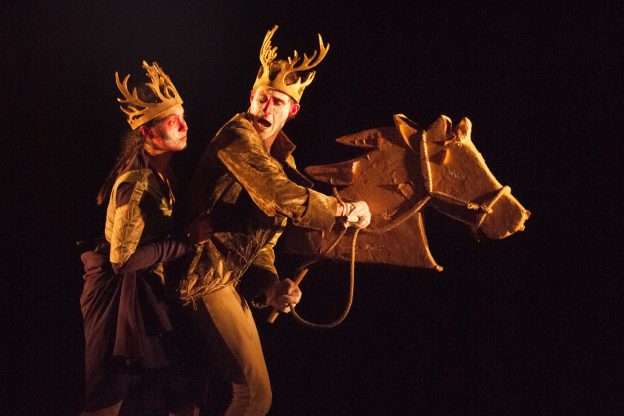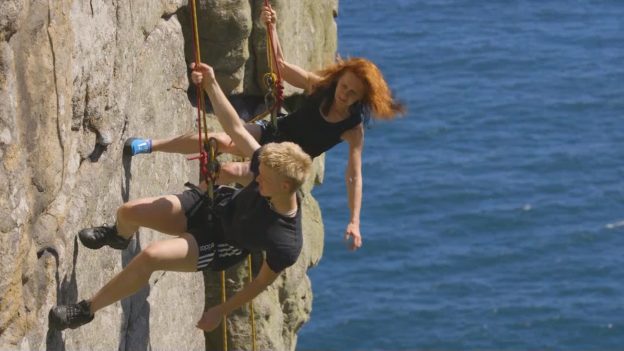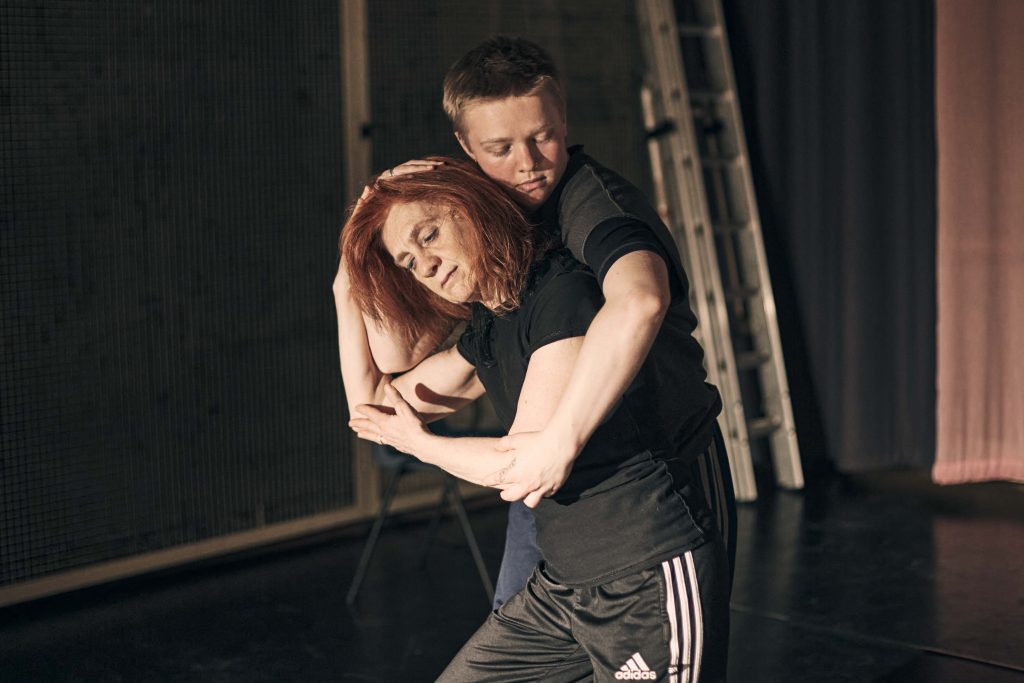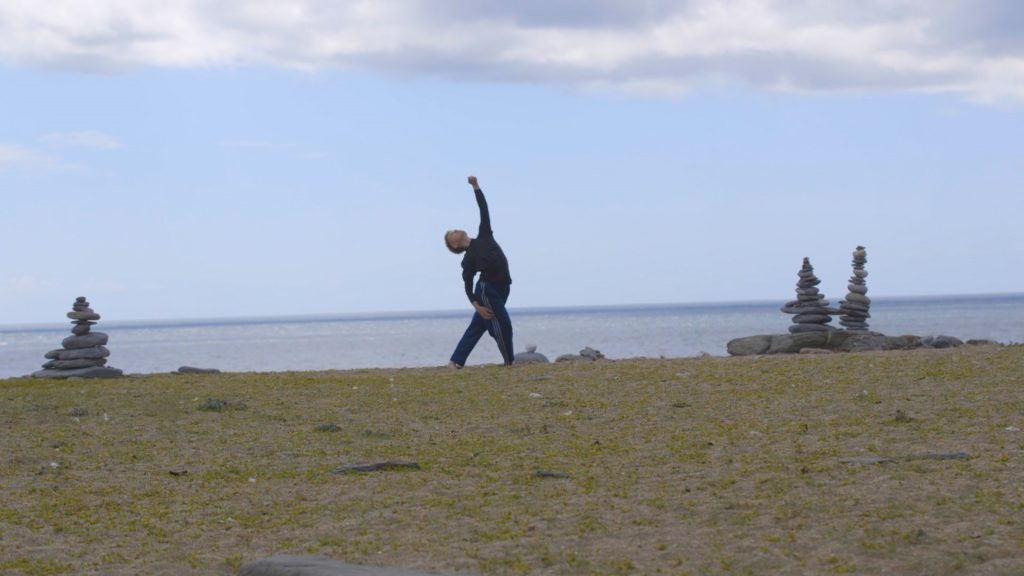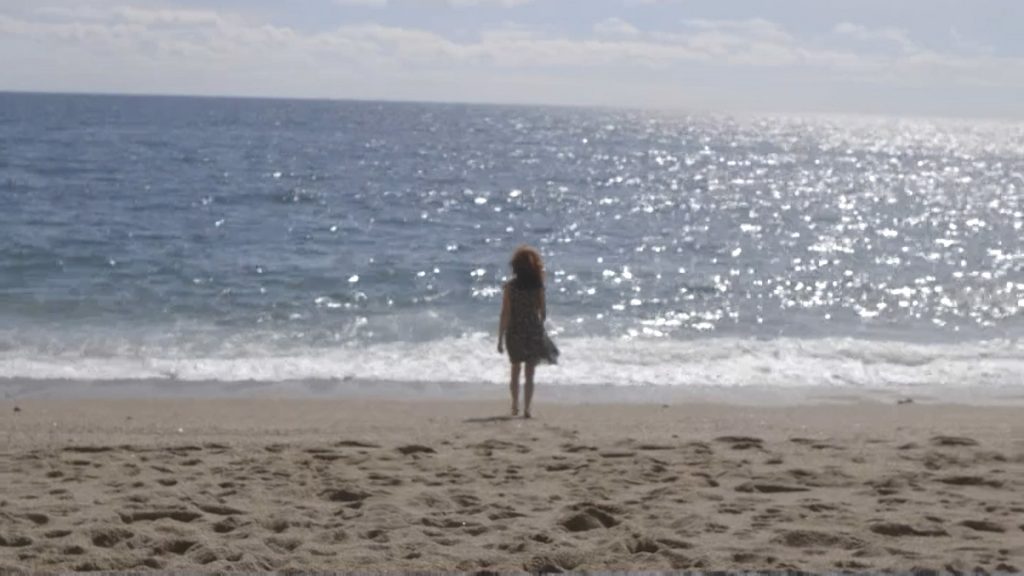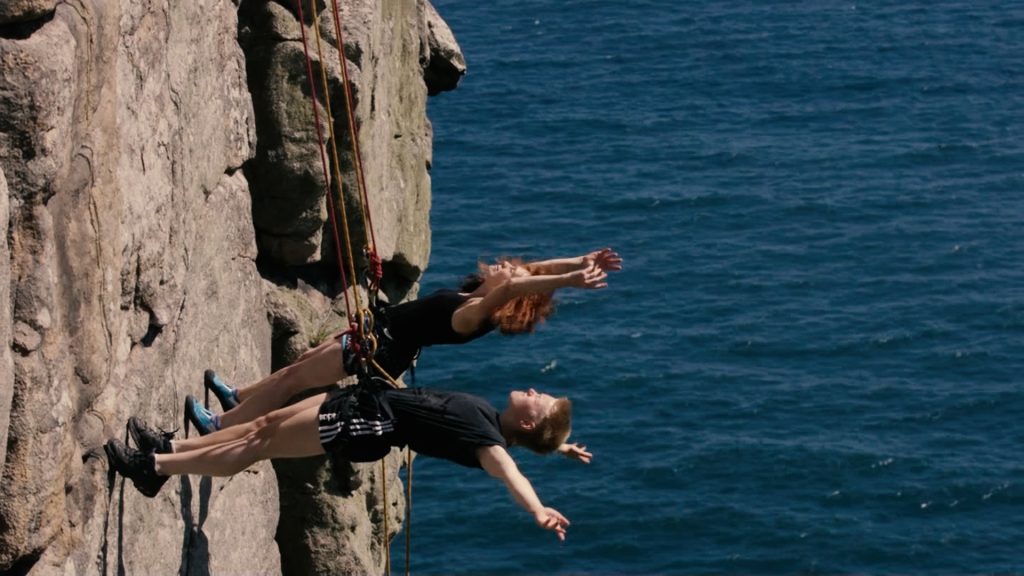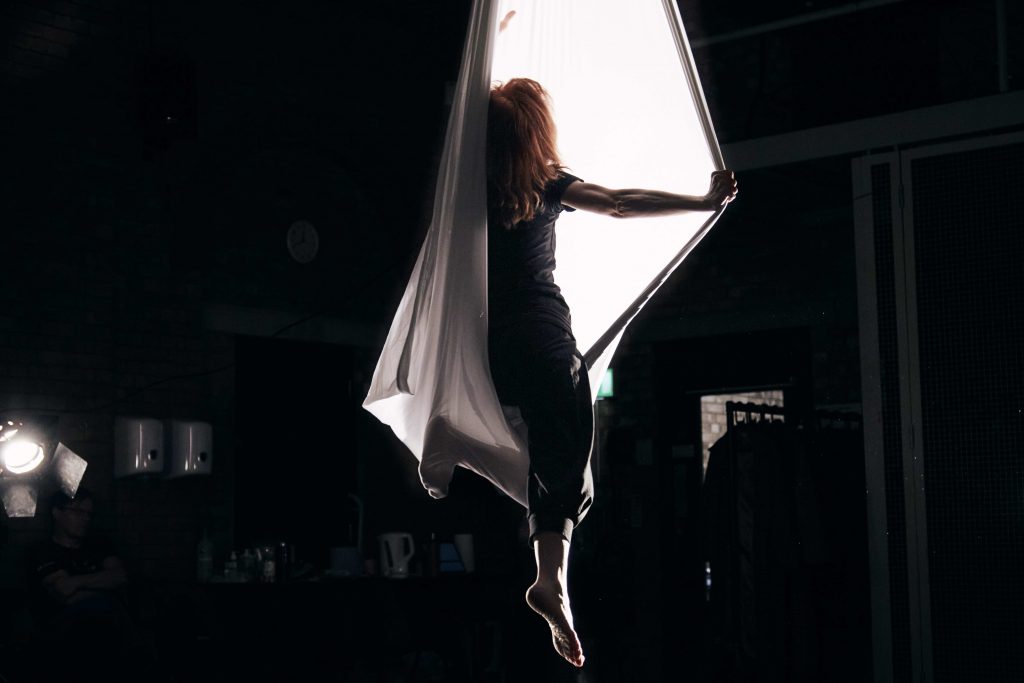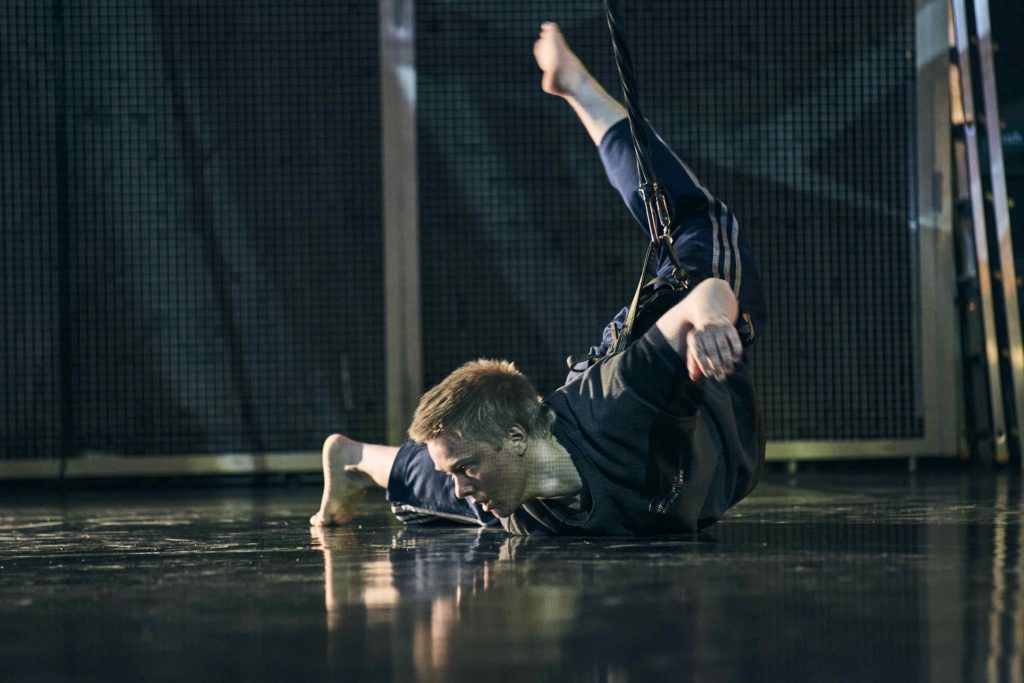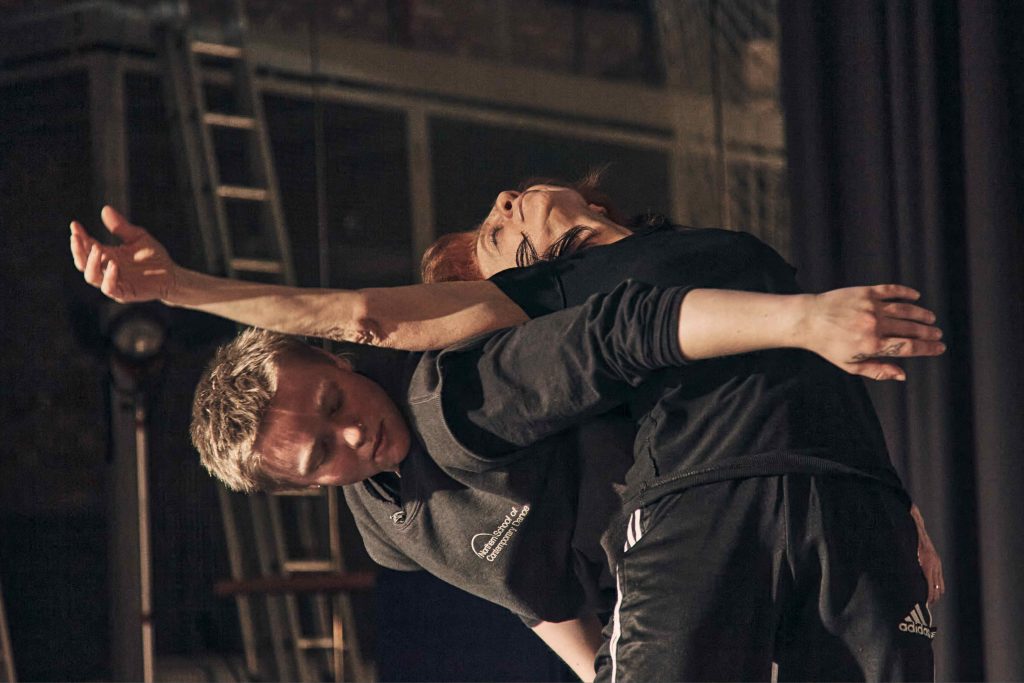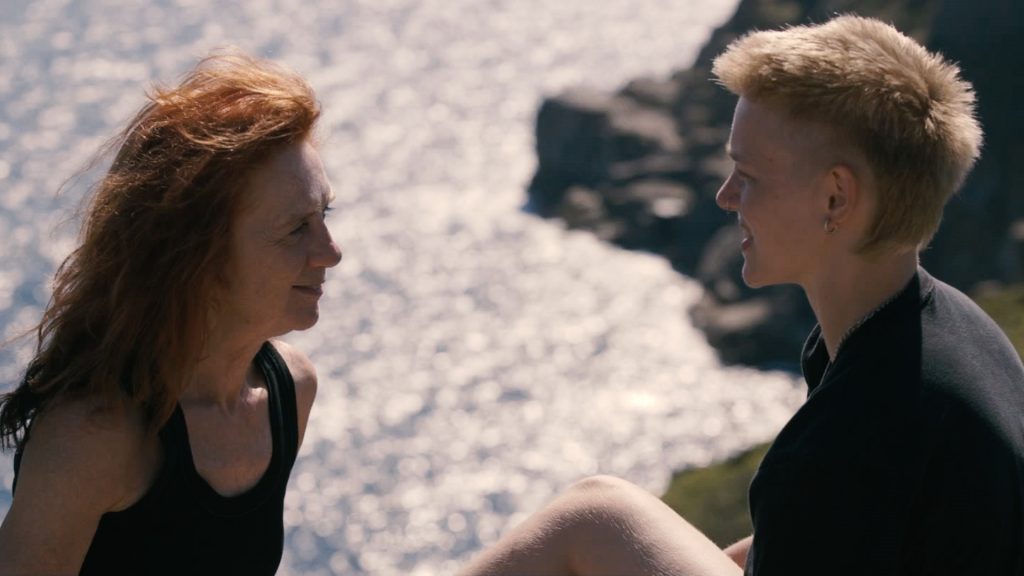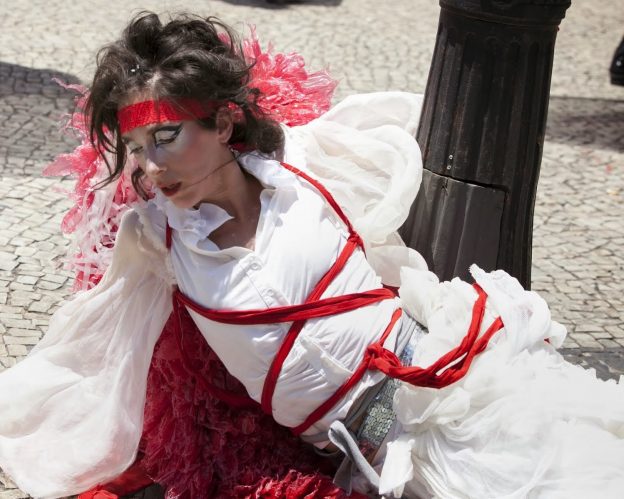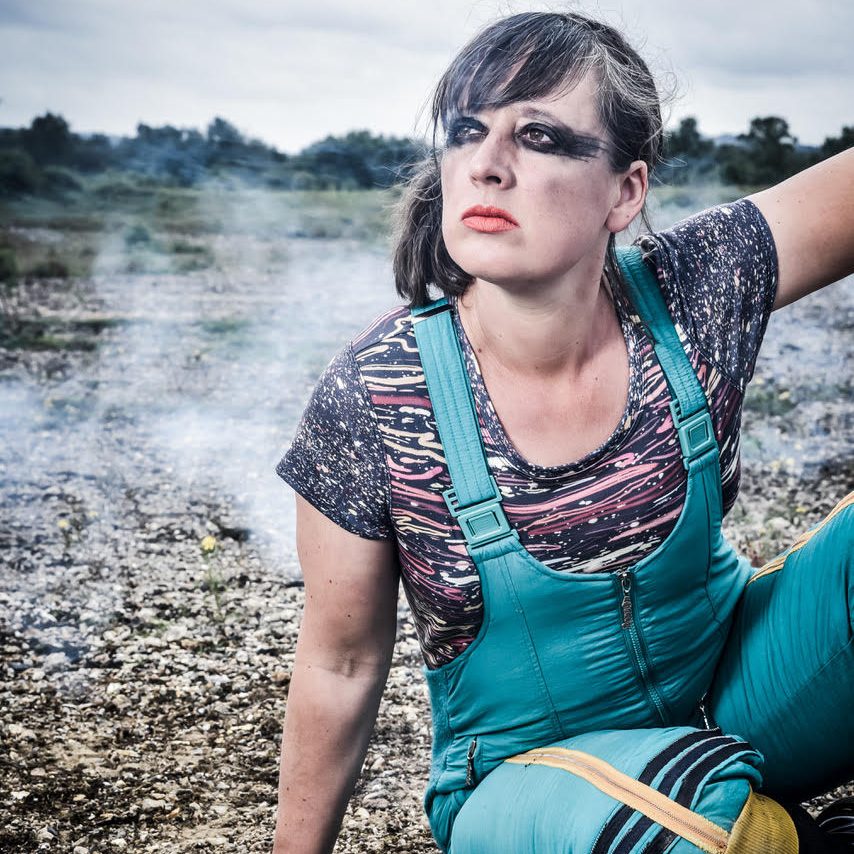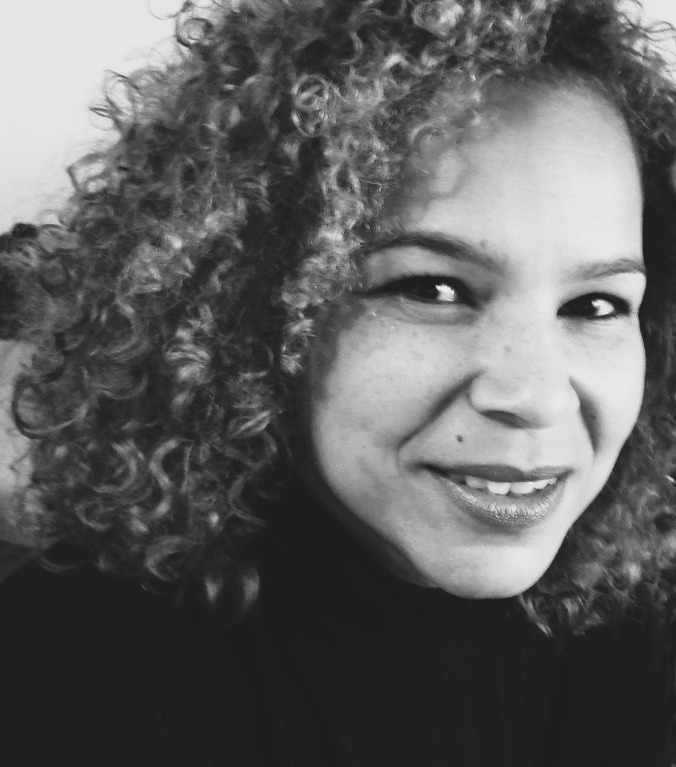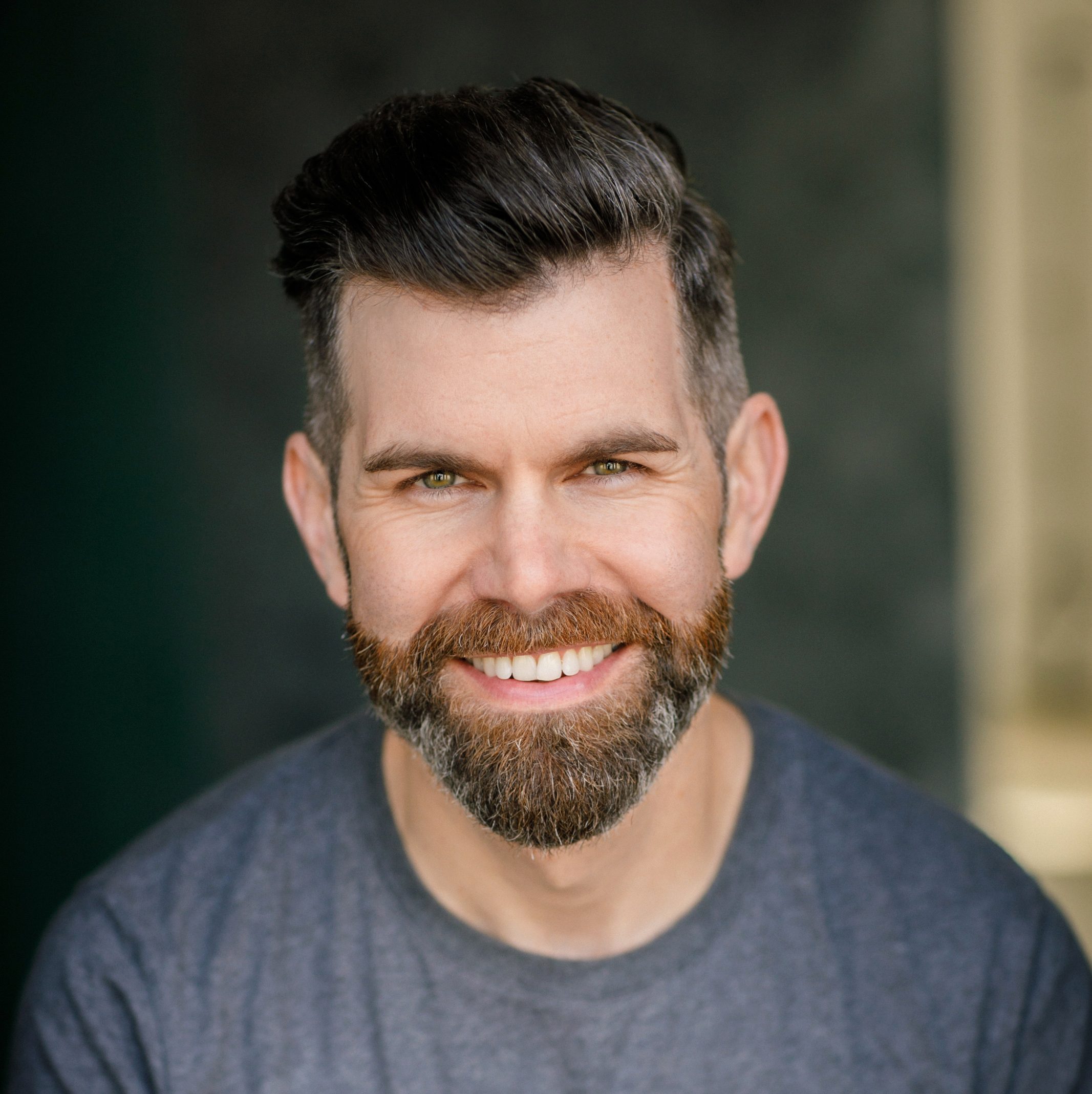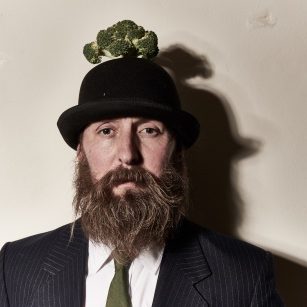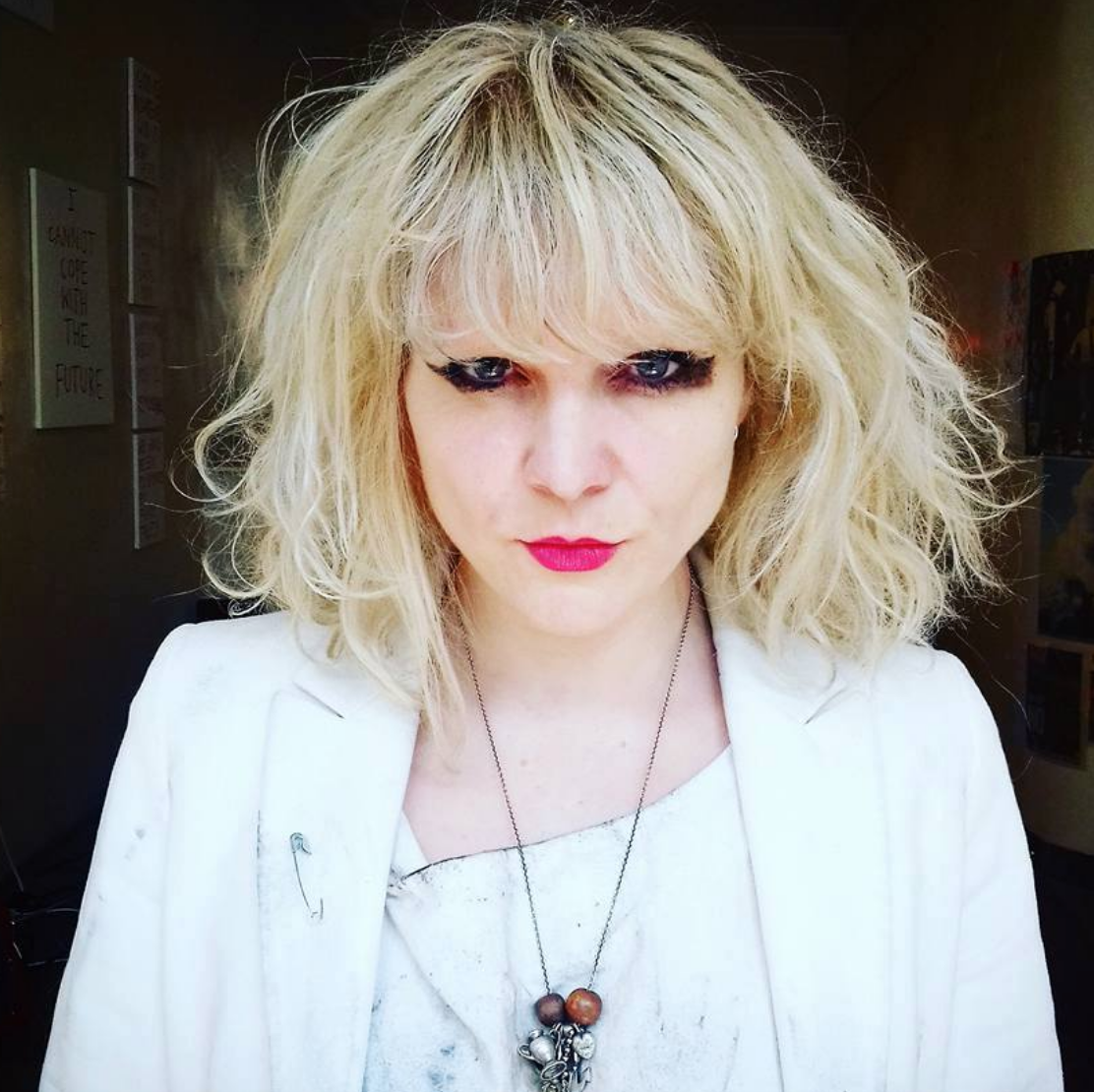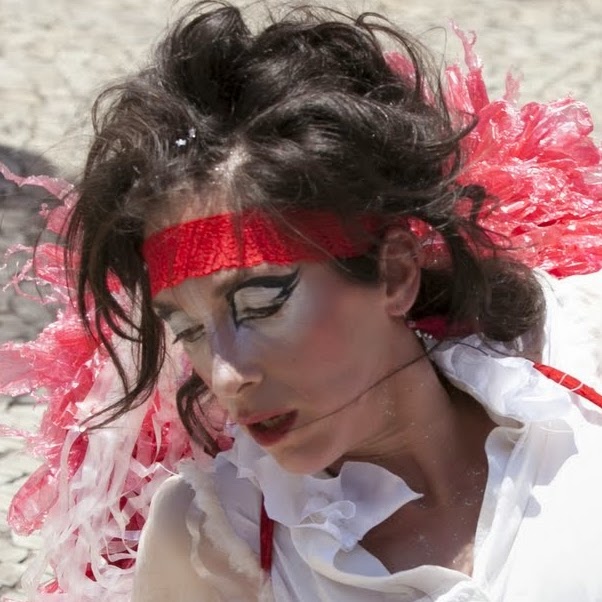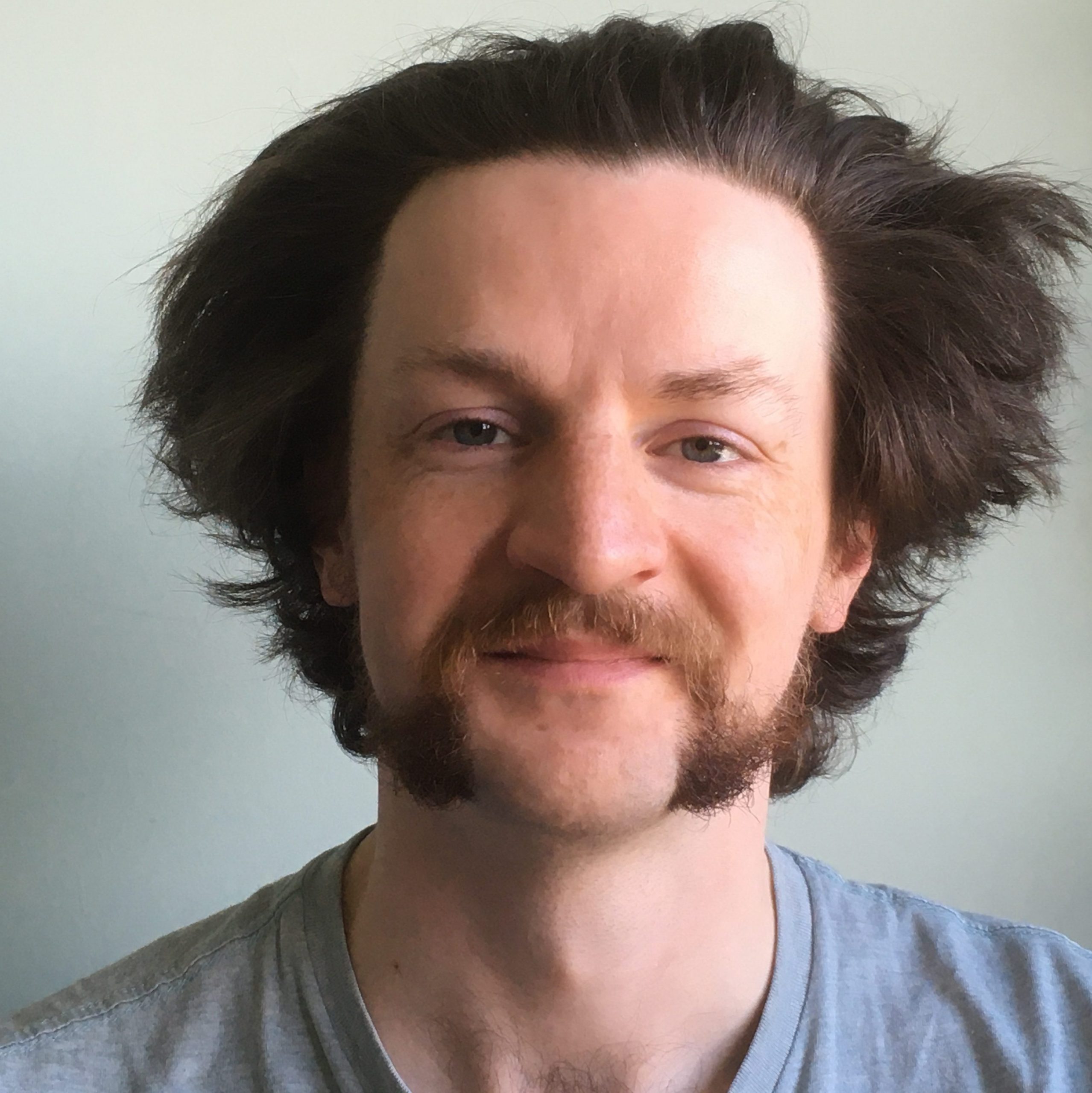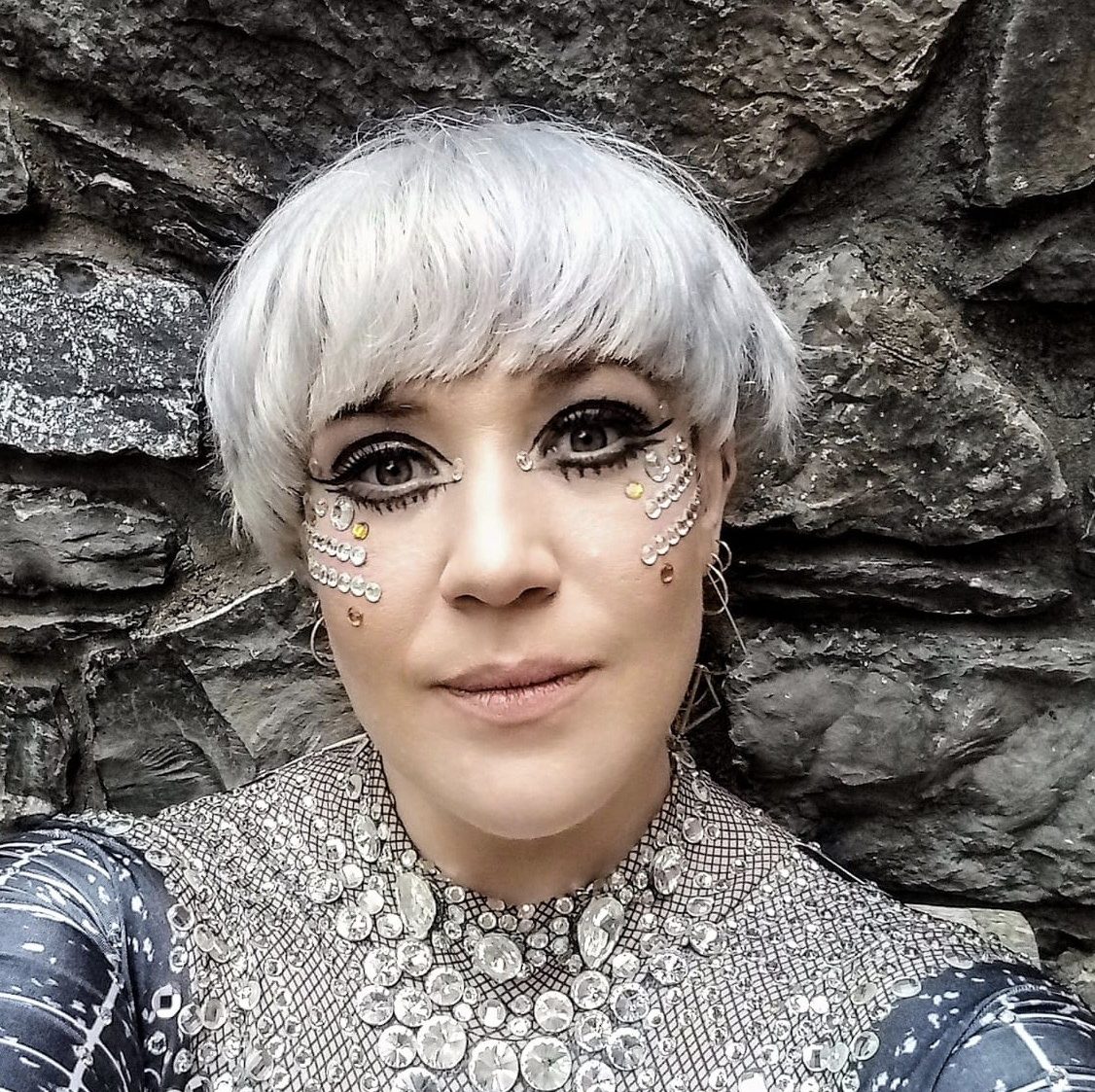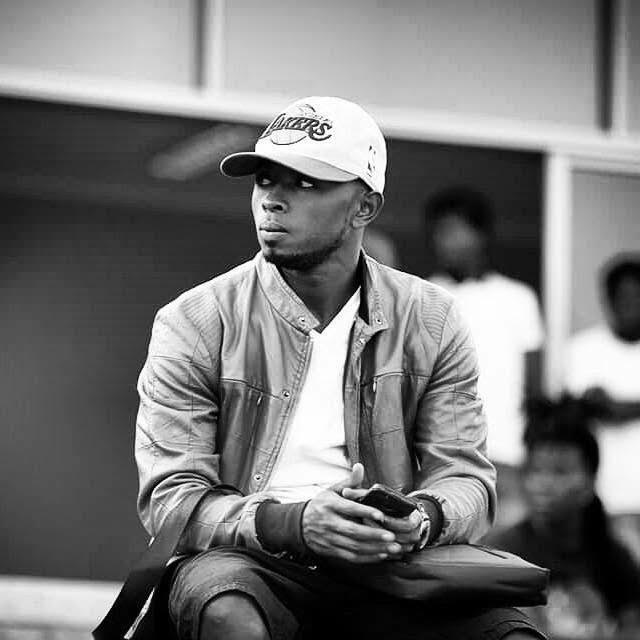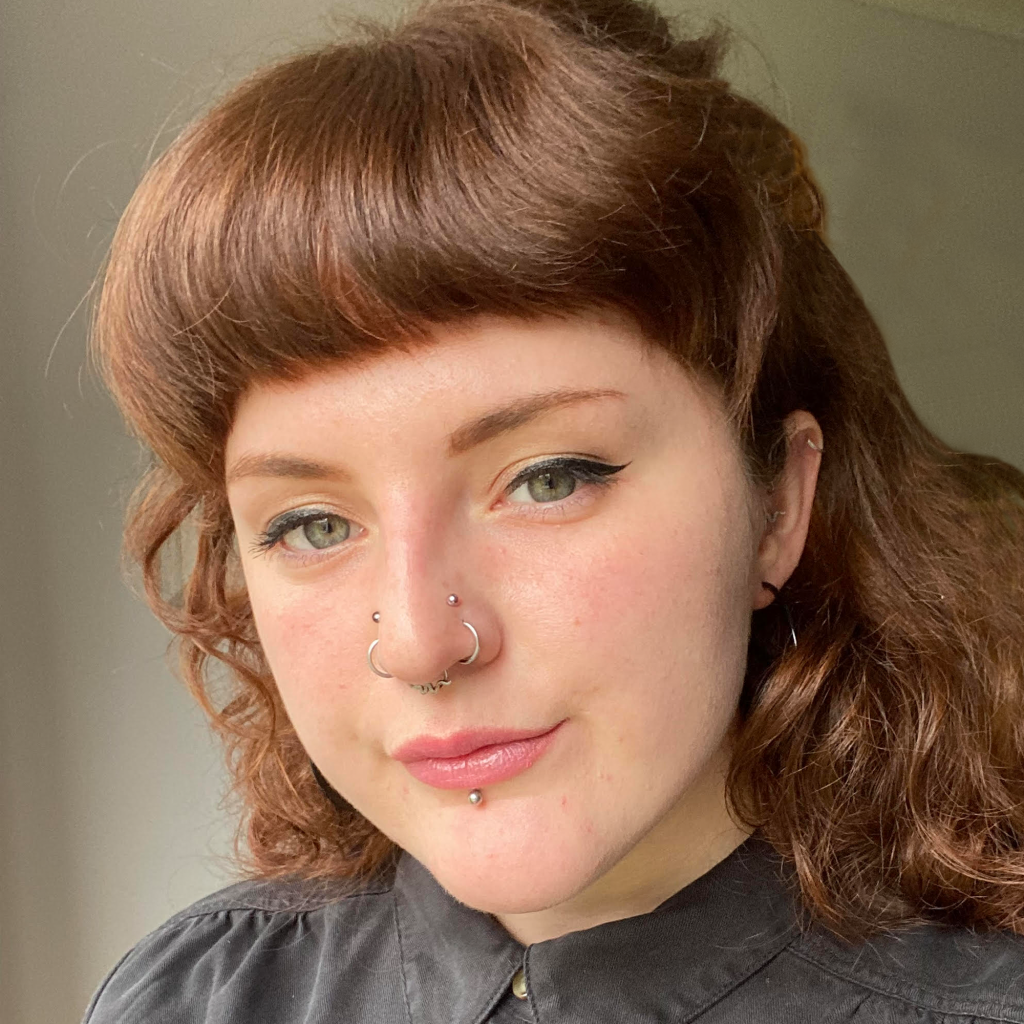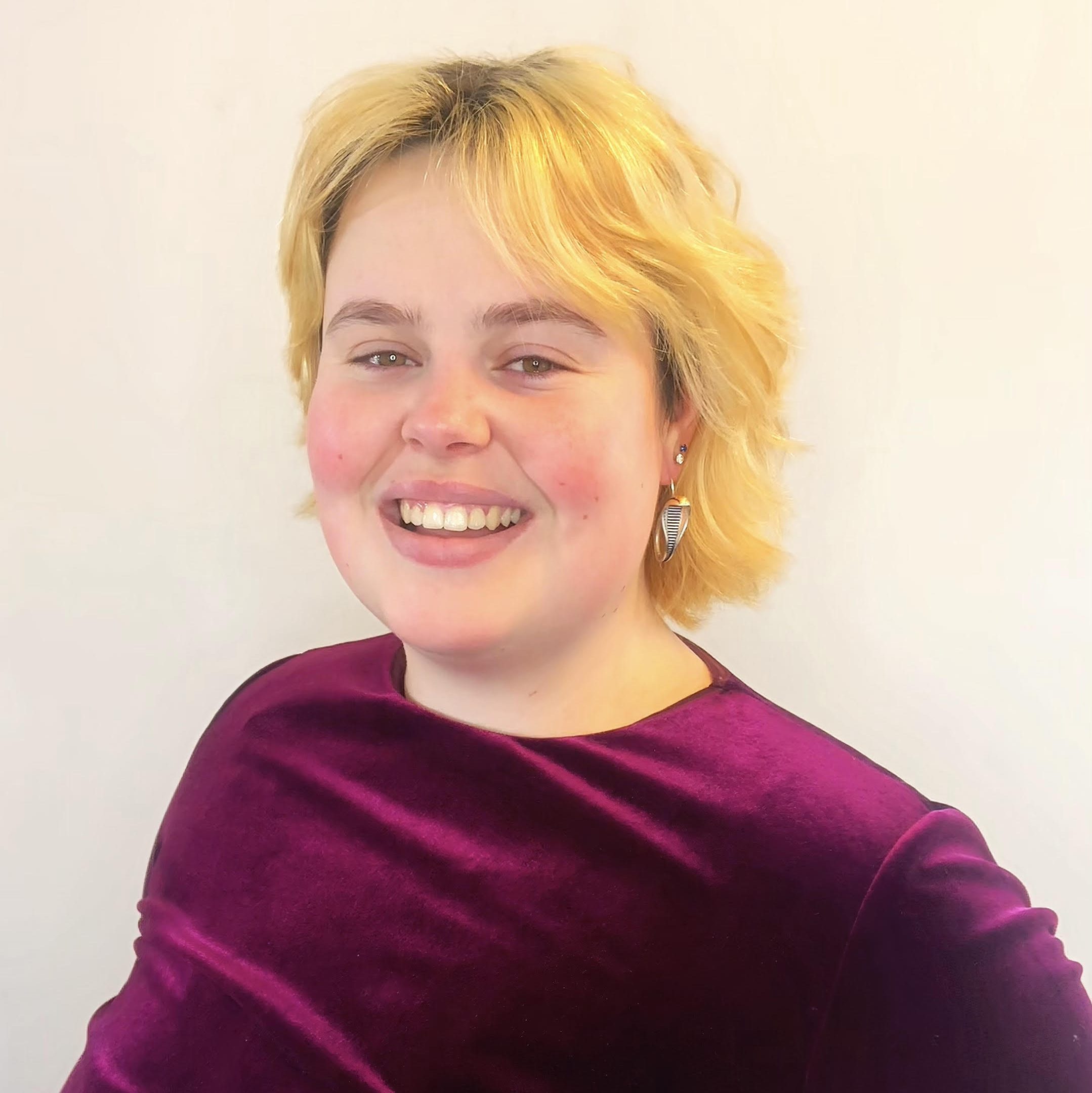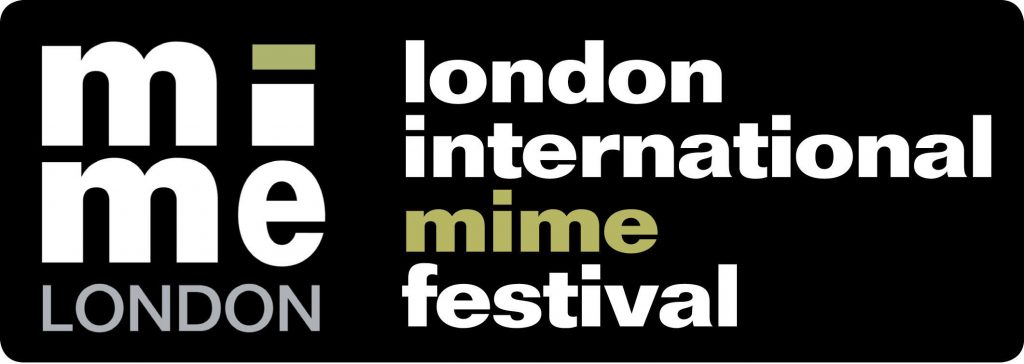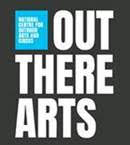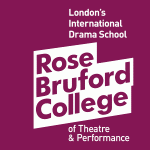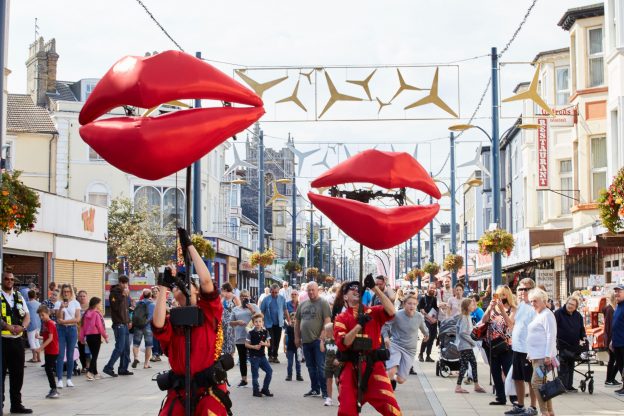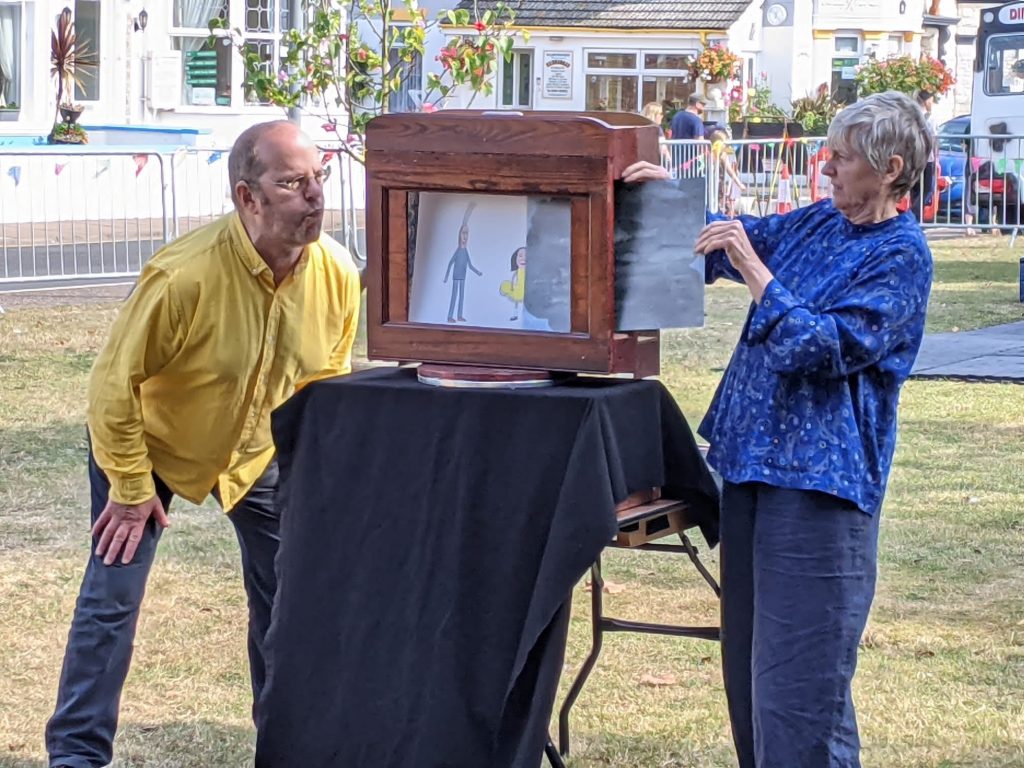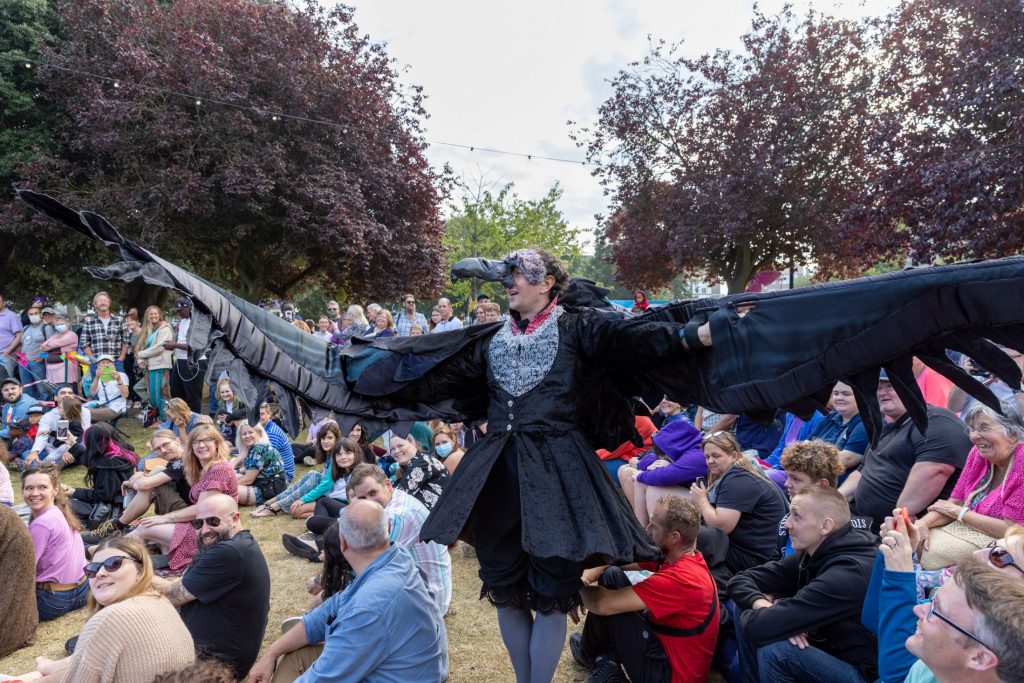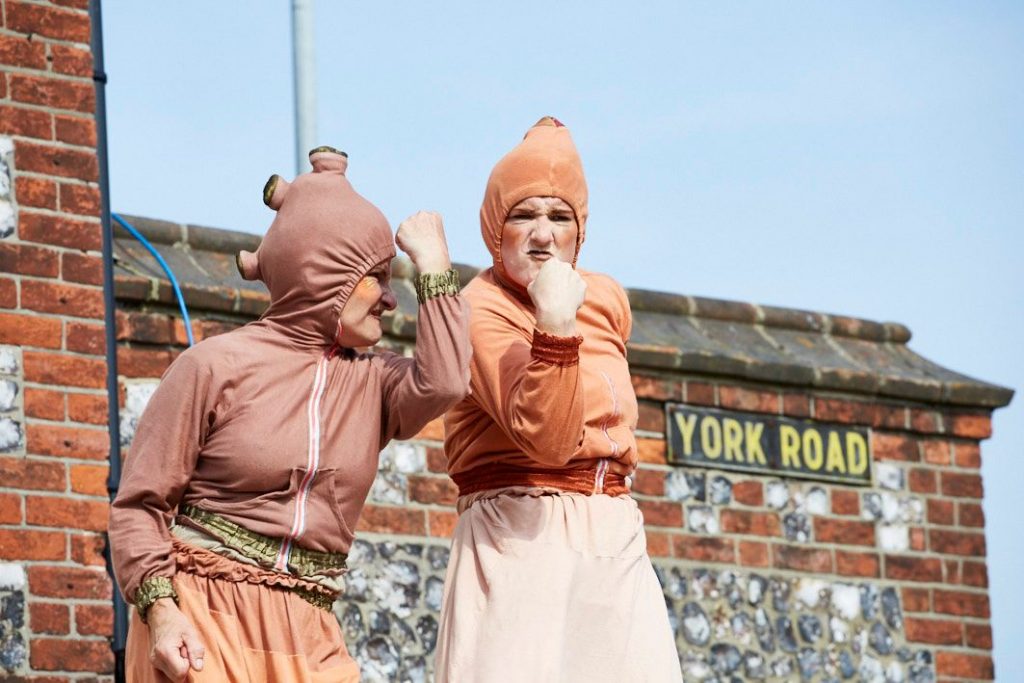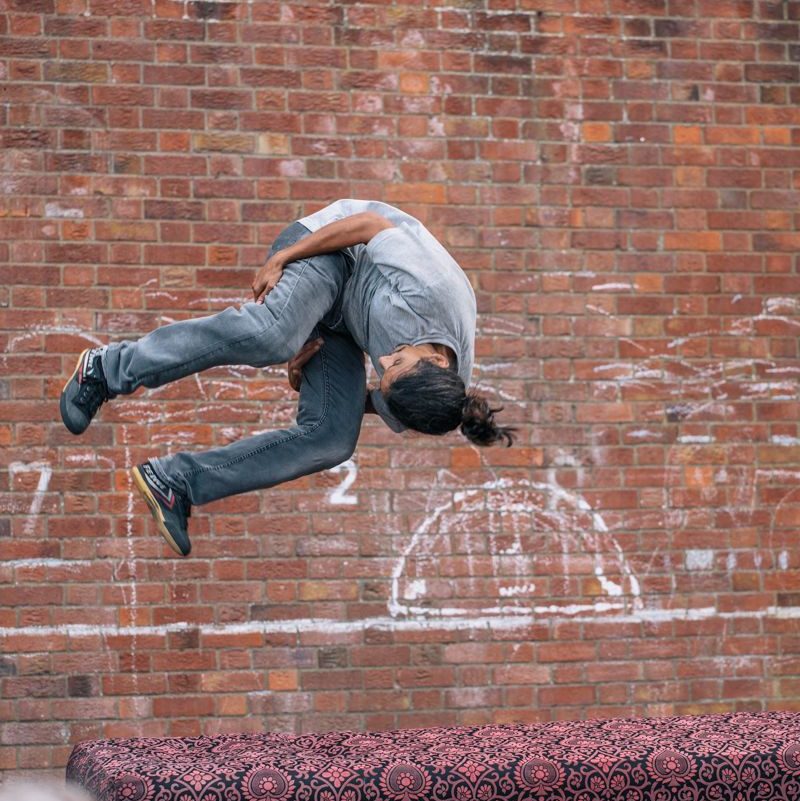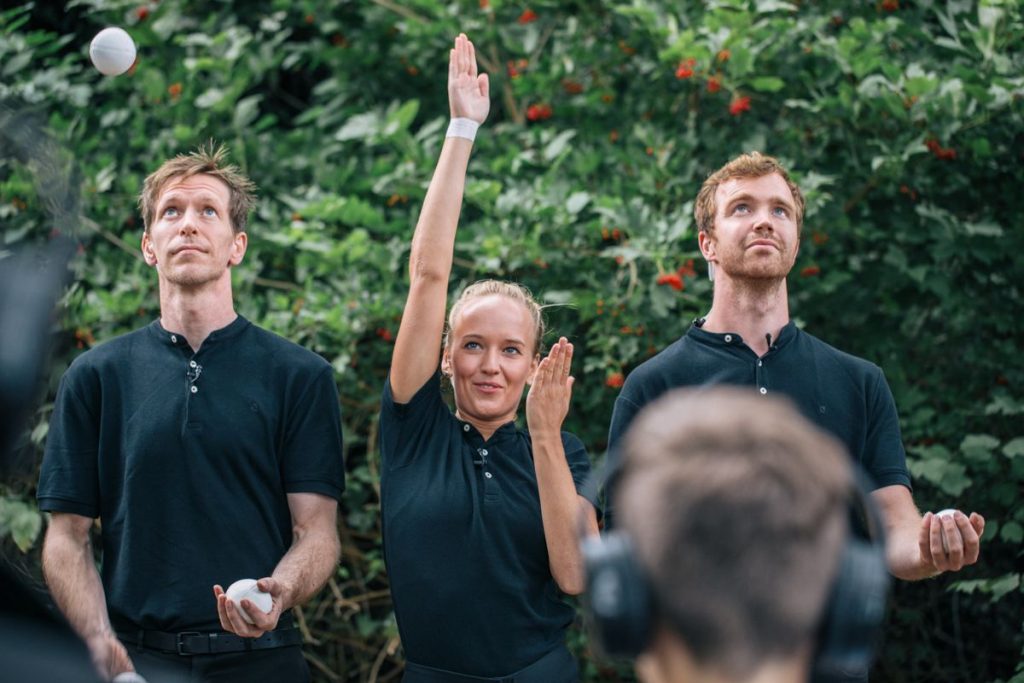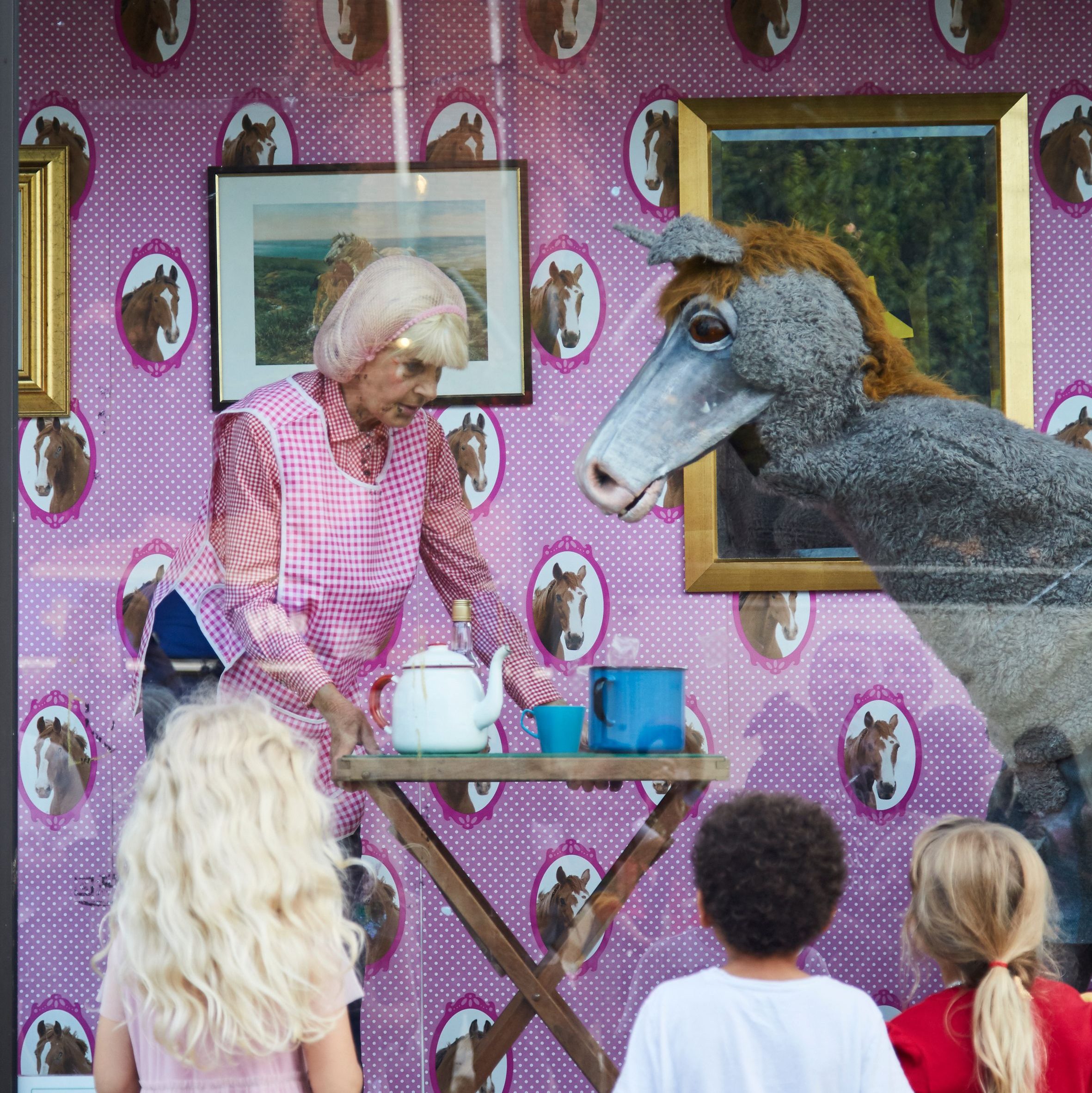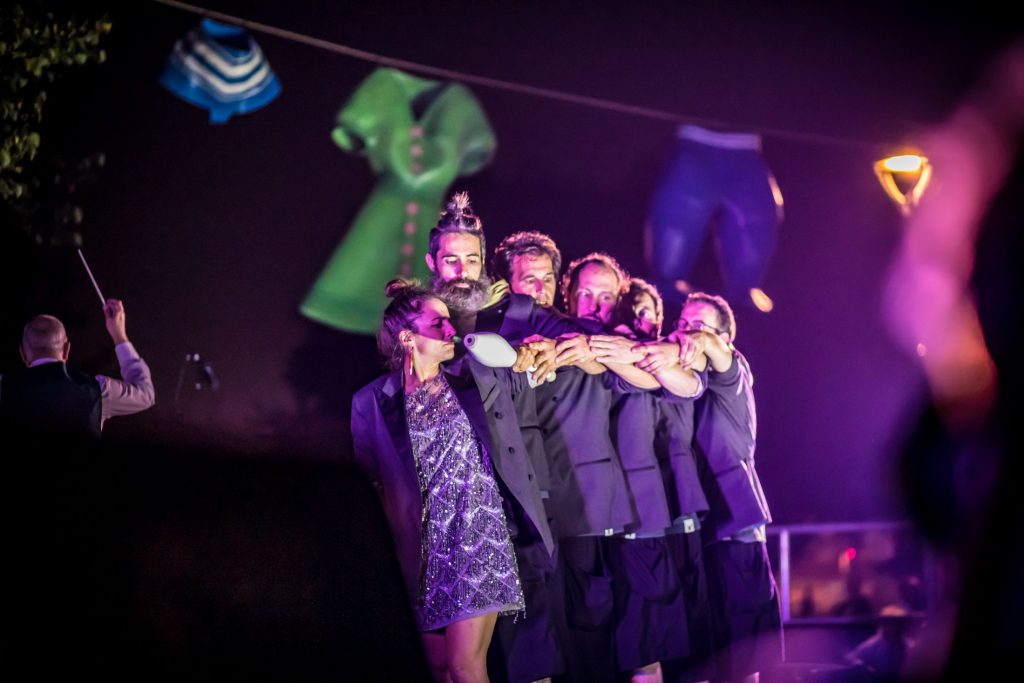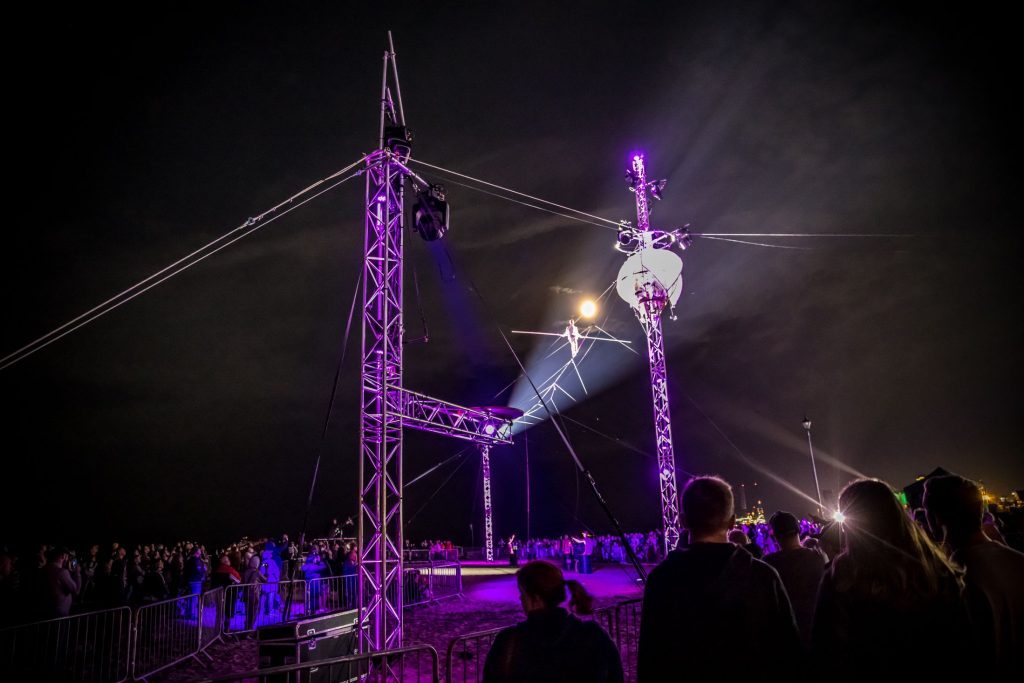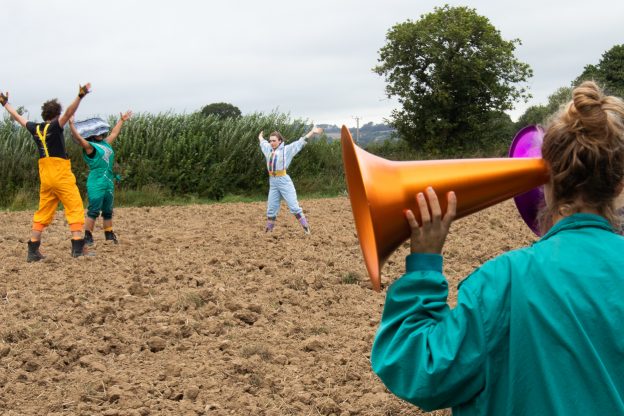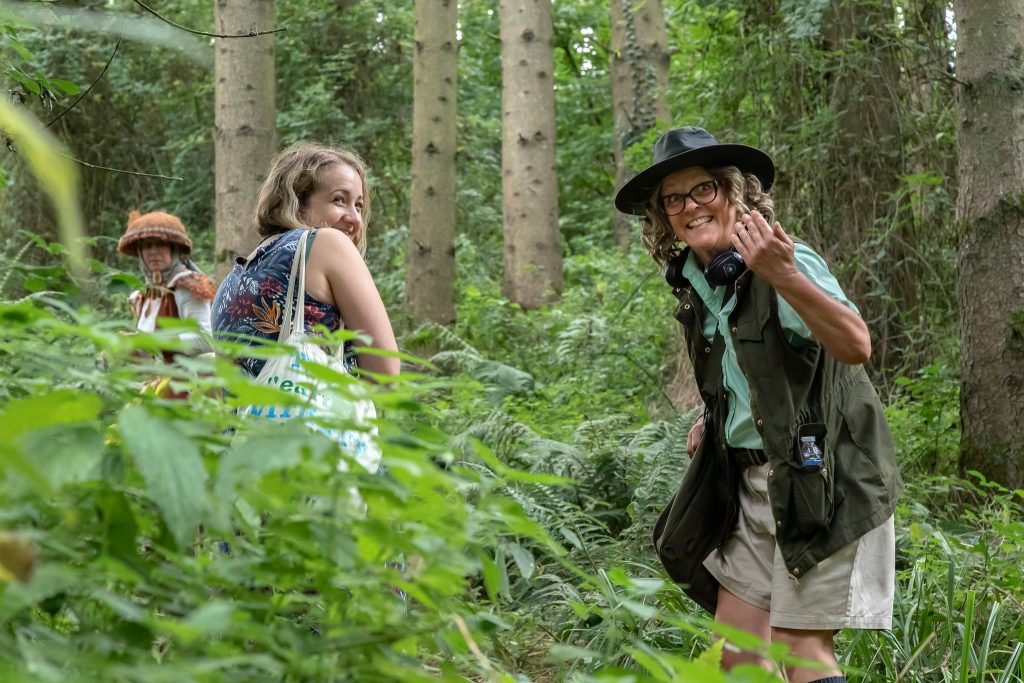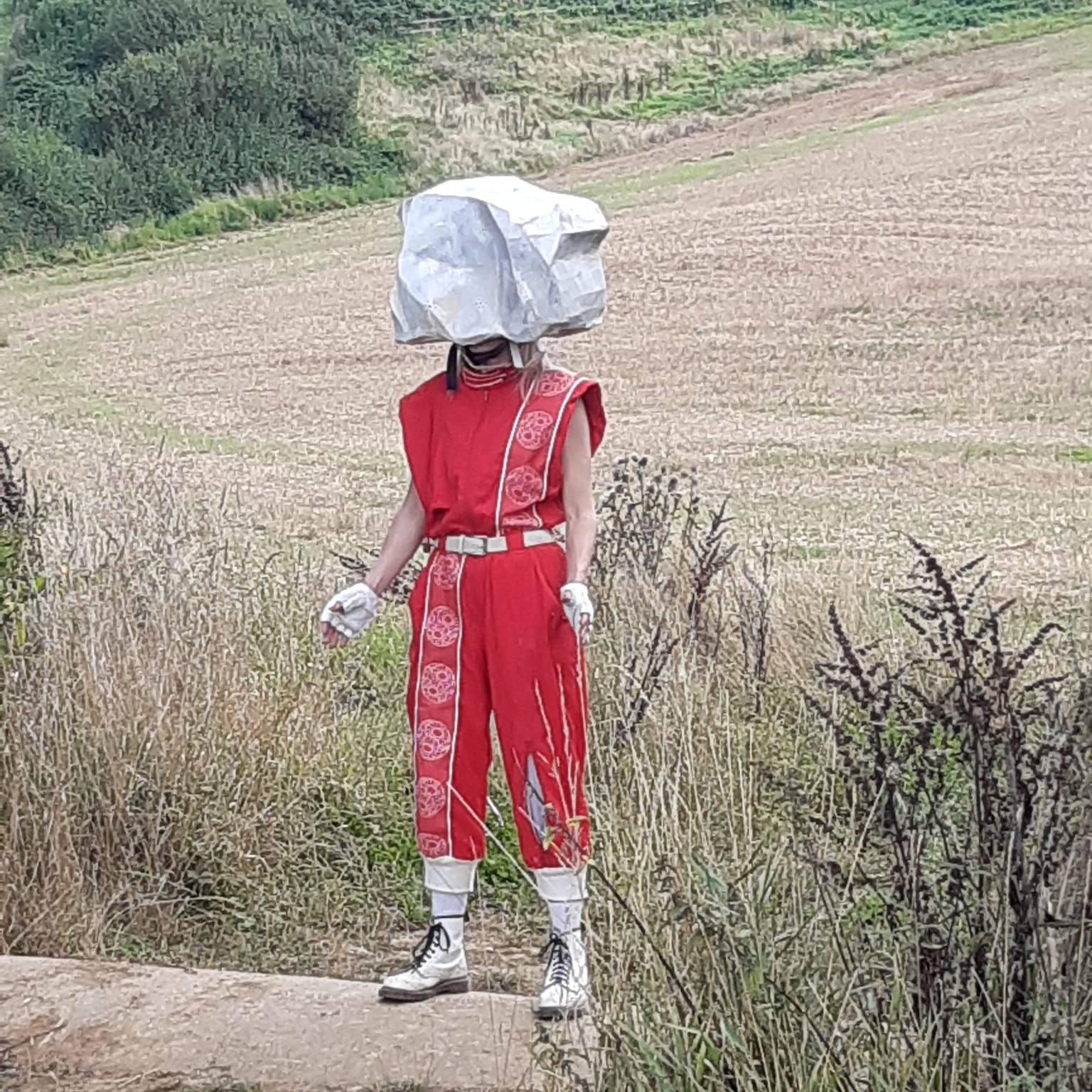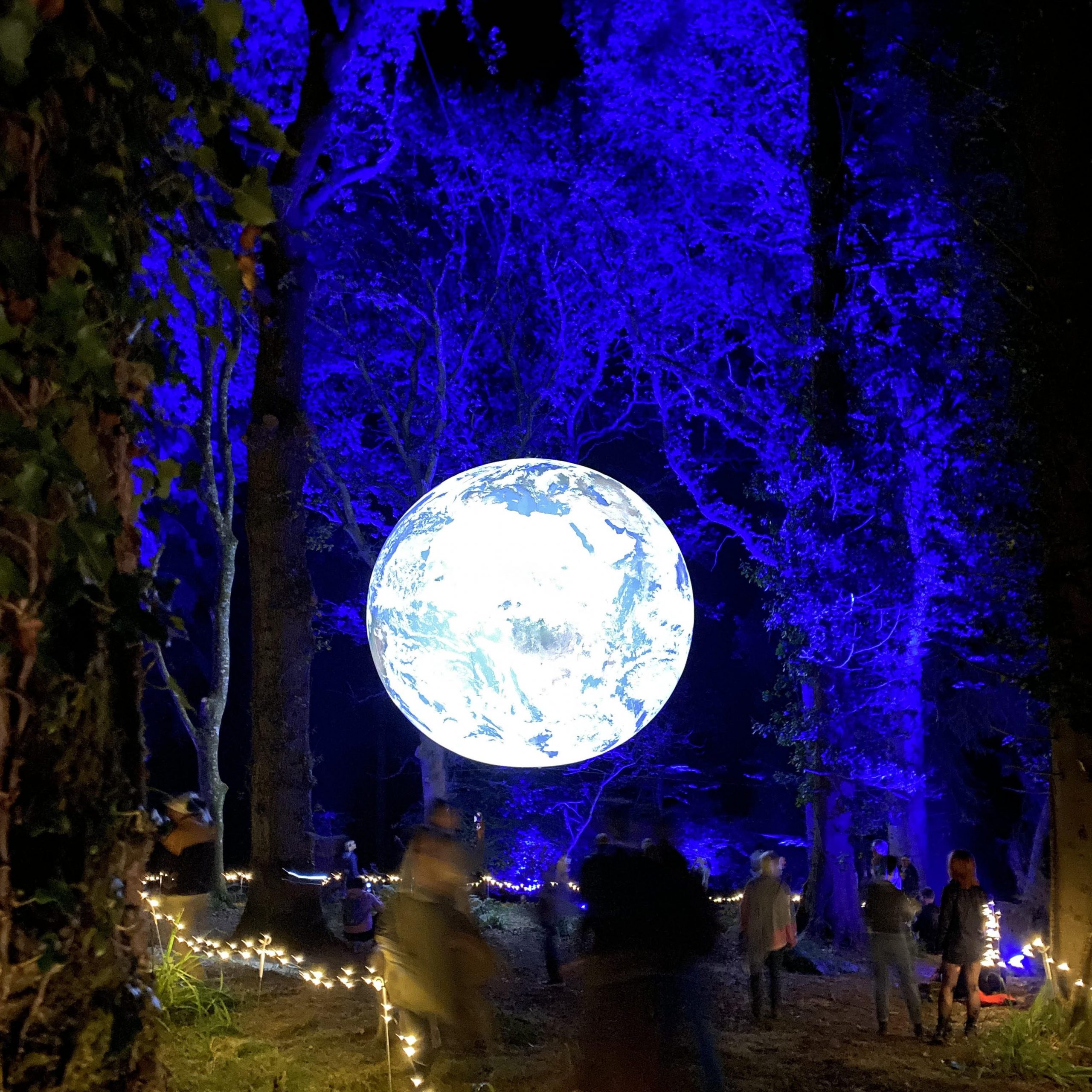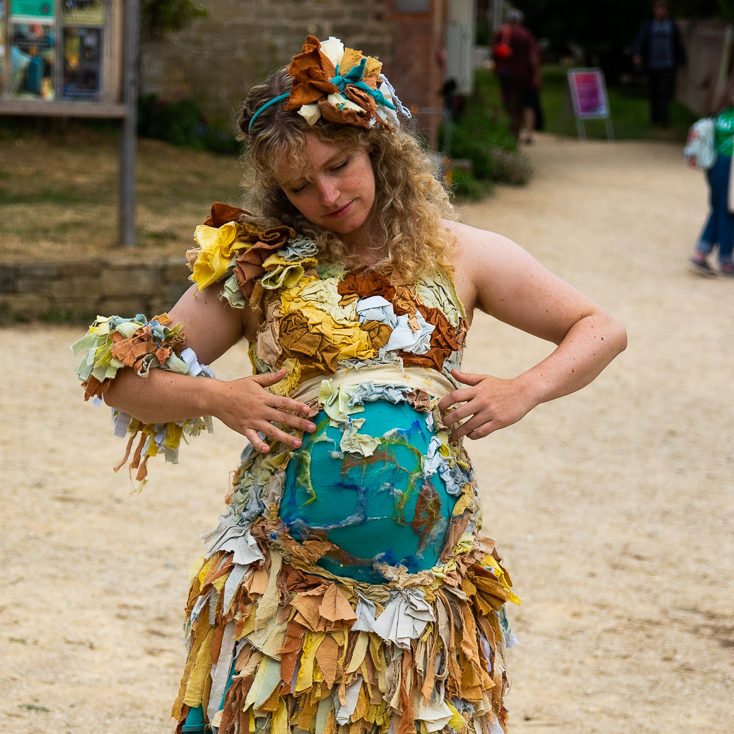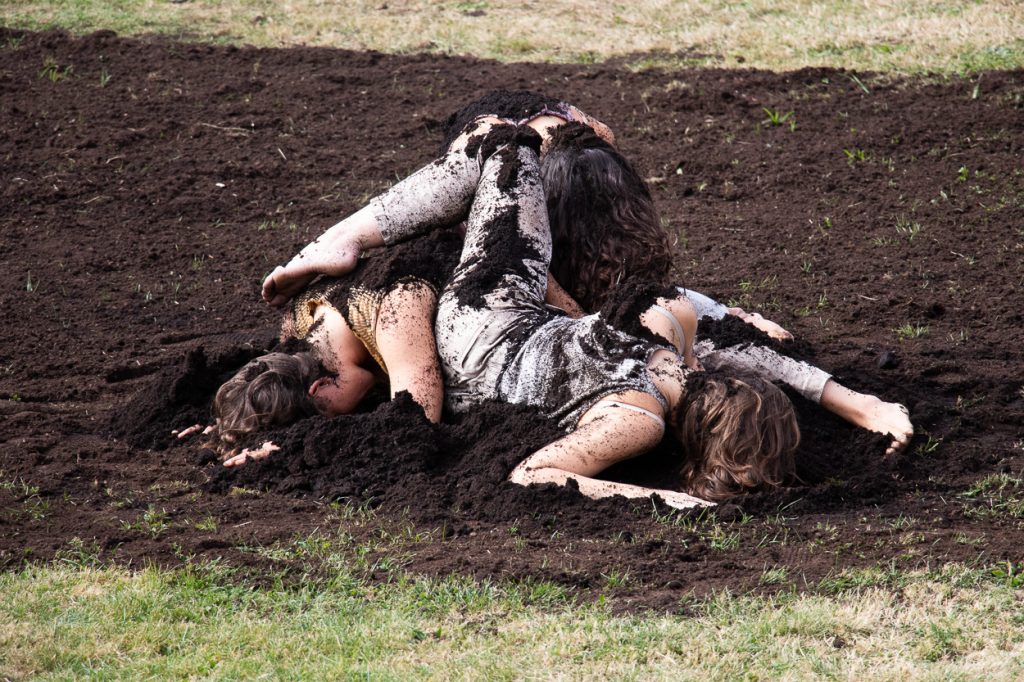After a wholly online edition in 2021, the London International Mime Festival 2022 is back ‘large and live’. Dorothy Max Prior talks to the Festival’s co-directors, Joseph Seelig and Helen Lannaghan
It’s the week before Christmas, and there’s talk – once again – of possible lockdowns to slow the spread of Covid-19, perhaps pre- but more likely post-Christmas. There’s speculation, as new variant Omicron tears through the country, that theatres and other venues may once again be closed. Those putting on shows over the winter holiday season are biting their nails to the quick, hoping they can get through the run. Can we really still be in this situation after a calamitous 18 months of dashed hopes and lost revenue?
Meanwhile, the directors of the London International Mime Festival, Joseph Seelig and Helen Lannaghan, are sitting tight. LIMF 2022 opens on 12 January. After going online for the 2021 edition, the festival is back ‘large and live’ in 2022, featuring 14 productions, and putting British work centre-stage. At least, that’s the plan.
‘We travel in hope,’ says Helen when I speak to them (on Zoom, inevitably). Helen and Joseph are both quietly optimistic that things will work out, but take the philosophical stance that ‘what will be, will be’.
So, just how did they go about programming a live festival in the current climate? This can’t have been easy in these uncertain times!
Helen takes us back to the height of the first wave of the pandemic, in 2020:
‘When it become obvious we couldn’t plan a live festival for 2021 and had to go digital, we decided to commission work from a number of British artists for the 2022 edition,’ she says. ‘It was clear, back then, that things weren’t just suddenly going to ping back to normal and be fine for 2022…’
Even before the onset of the pandemic, planning anything international had become something of a nightmare due to Brexit and the subsequent difficulties with visas, tax, carnets… Hindered not helped by what Helen refers to as ‘our retro-fit government’.
‘So little was in place, just weeks before Brexit,’ she says, ‘nobody was thinking ahead, nobody seemed to value culture’.
Then with the pandemic on top came further difficulties with international travel – the high cost of freight, the rising cost of hotels and air travel, not to mention closed borders and constantly changing quarantine rules. Thus, Joseph and Helen took the sound forward-looking decision that for the 2022 edition, they would need to plan for a largely British festival.
‘So, all in all, we cut our cloth according to our means,’ says Helen.
‘We didn’t cut off our nose to spite our face!’ adds Joseph with his customary humour.

They therefore, a year ahead or more, commissioned a number of British companies to make work. Companies like Gandini Juggling, who LIMF have supported steadily over the years, seeing them rise from small studios at BAC to the Royal Opera House and to Sadler’s Wells, who have co-commissioned the new work. Having toured the world with their homage to Pina Bausch, Smashed, the company now turn their attention to another giant of contemporary dance, Merce Cunningham. In LIFE A Love Letter to Merce Cunningham, Sean Gandini and company co-founder/director Kati Ylä-Hokkala have created an original piece of work firmly rooted in the Cunningham universe. The world premiere is on 12 January 2022 – the opening show for this year’s London International Mime Festival.
Joseph describes Gandini Juggling as one of the ‘mature’ companies that LIMF are supporting, going on to note that another company edging up into that category is Barely Methodical Troupe, who are (like Gandini) a contemporary circus group who have been supported along their developmental path by LIMF. They bring a revival of KIN, to the Peacock Theatre for this year’s festival – a high octane whirl of acrobatic storytelling that playfully explores competitiveness and male-female dynamics.
Then, says Joe, there’s Theatre Re, who are another good-sized ensemble company whose work has been consistently programmed by LIMF. Their fourth show, Bluebelle, weaves together plots and characters from ancient folktales collected by Angela Carter, Italo Calvino, the Brothers Grimm and Charles Perrault; together with interviews with parents and carers. Staged in Theatre Re’s striking corporeal mime style of lyrical, visual theatre, and accompanied by live music, Bluebelle reminds us that life is shaped by the stories we tell and leave behind.
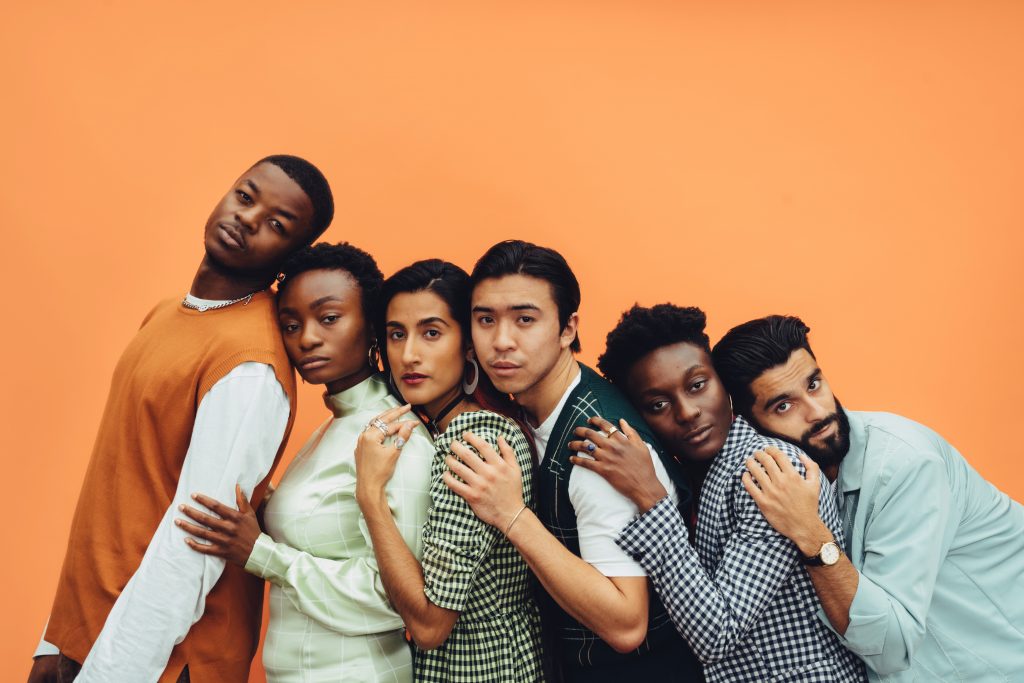
Another world premiere, and also an ensemble piece that like Bluebelle is presented at Shoreditch Town Hall, is The PappyShow’s What Do You See?, a multidisciplinary performance weaving together words, song, movement, visual design and audiovisual effects, and asking us all to consider the question: When you look at someone, what do you see?
‘Director Kane Husbands didn’t just want to just make a show about Black identity, he wanted to address and celebrate all identities,’ says Helen. So, What Do You See? is created, under Kane’s direction, by a team of 12 performers, and a creative team of 27 people, representing a spectrum of intersectional identities in Britain today, including people of many different ethnicities and ages, with differently-abled bodies of all shapes and sizes – and celebrates all of those identities.
‘They are in the rehearsal room at the moment,’ says Helen, ‘and you can feel the explosion of energy and the freshness of the work’.
Joe adds: ’Two years ago at the Purcell Room we presented their previous show, BOYS. It started as the audience were coming in, and the good feeling and energy that they exuded got the audience going before they had even started. There is an excitement about their onstage presence that appeals not only to young people but also to (ahem) not-so-young people like myself. We are very proud to be bringing that work to audiences. What Do You See? is a piece of theatre that is at least as much about atmosphere as about its sound message…’
‘When we were asked a long time ago if we could see any positives from Brexit, the only one that we could both see was that it might be good for British work… assuming we do get to present the work,’ says Helen.
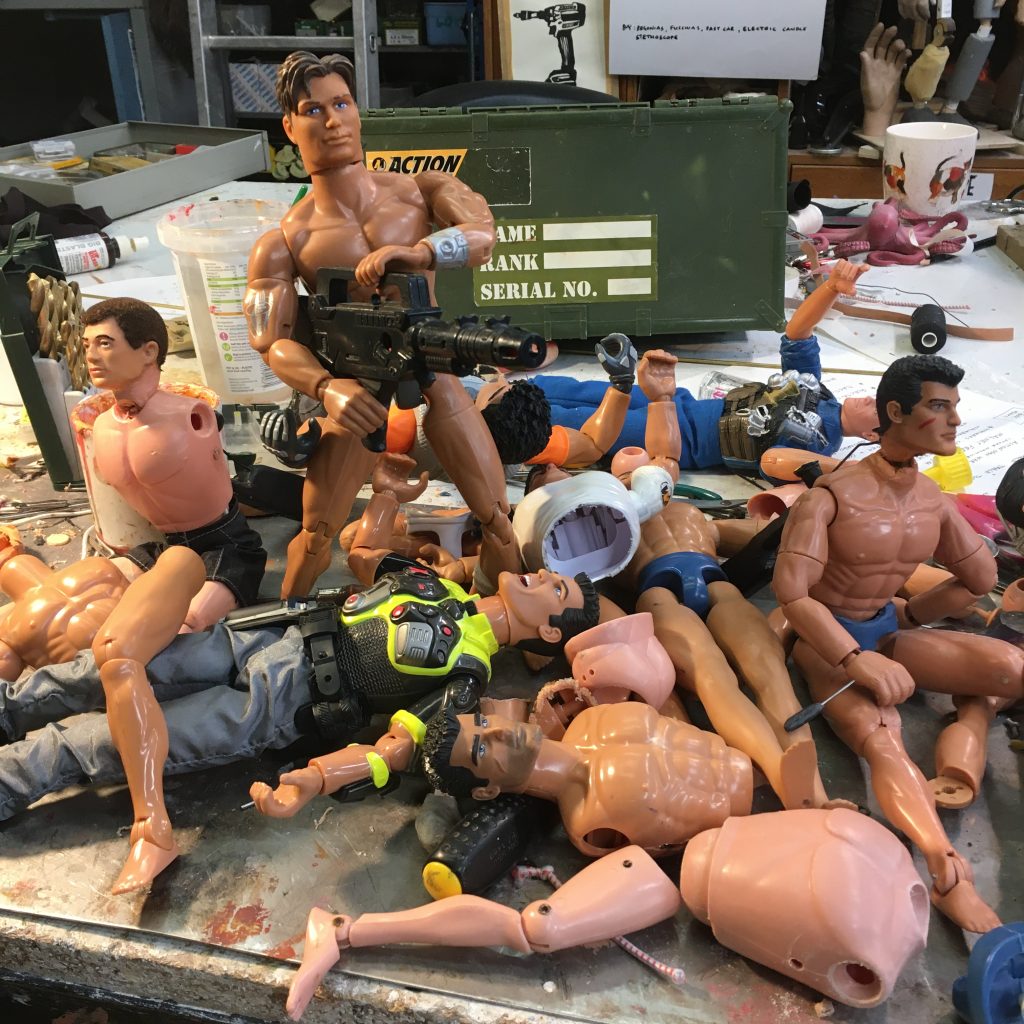
On a smaller scale, other British companies who have been commissioned for this year’s festival include Opposable Thumb, who follow up their fabulous Coulrophobia with another two-man show, Big Boys Don’t Cry, presented at Jacksons Lane. Using potato crisps, puppets, dead bodies and Action Men, company co-founders/performers Adam and Dik take us into the beating heart of the modern male and attempt to answer the burning question: what maketh a man? Nature or nurture? Mind or body? Cheese ‘n’ Onion or Prawn Cocktail?
Then, there’s Jean-Daniel Broussé (one half of the award-winning circus duet Nikki & JD). He has been commissioned to make a new solo work, (Le) Pain – an autobiographical piece about his family of origin that will be seen at The Place as part of LIMF 2022. JD’s story is that he was born to inherit the French bakery run by four generations of his family. Instead, he studied history and literature, then ‘ran away to join the circus’, training at London’s National Centre for Circus Arts. In this, his first solo show, JD ‘travels through a universe of bread-making, physical heroics and growing up queer in strait-laced provincial France’. His collaborator and director on this project is the renowned Ursula Martinez.
‘We have ovens,’ says Helen, ‘he’ll be baking bread onstage!’

The London International Mime Festival has, over the many decades of its existence, presented work at many different venues – but a consistent partner over many years is the Barbican. With a desire to commission/present some international work in 2022, and to also present a major British theatre company on a decent-sized stage, conversations with the Barbican started.
‘The Barbican were willing to take the risk along with us,’ says Helen, speaking of the decision that they would co-present Compagnie 111’s: aSH, a piece created by Aurélien Bory for Shantala Shivalingappa that is the final part of Bory’s trilogy of large-scale solos for female dancers. In aSH, Shantala Shivalingappa pays homage to Shiva, God of creation and destruction, taking the audience on a journey linking ancestral culture and innovative technology.
Vanishing Point (Scotland’s foremost artist-led independent theatre company) will also be seen on the main stage of the Barbican with Interiors, which is inspired by Nobel Prize winner Maurice Maeterlinck’s 1895 play, Interior. Director Matthew Lenton’s original, highly visual staging premiered in 2009 and has toured across Europe, Asia and South America. Interiors is about sounds, silence, the path of fate and the darkness outside the window.
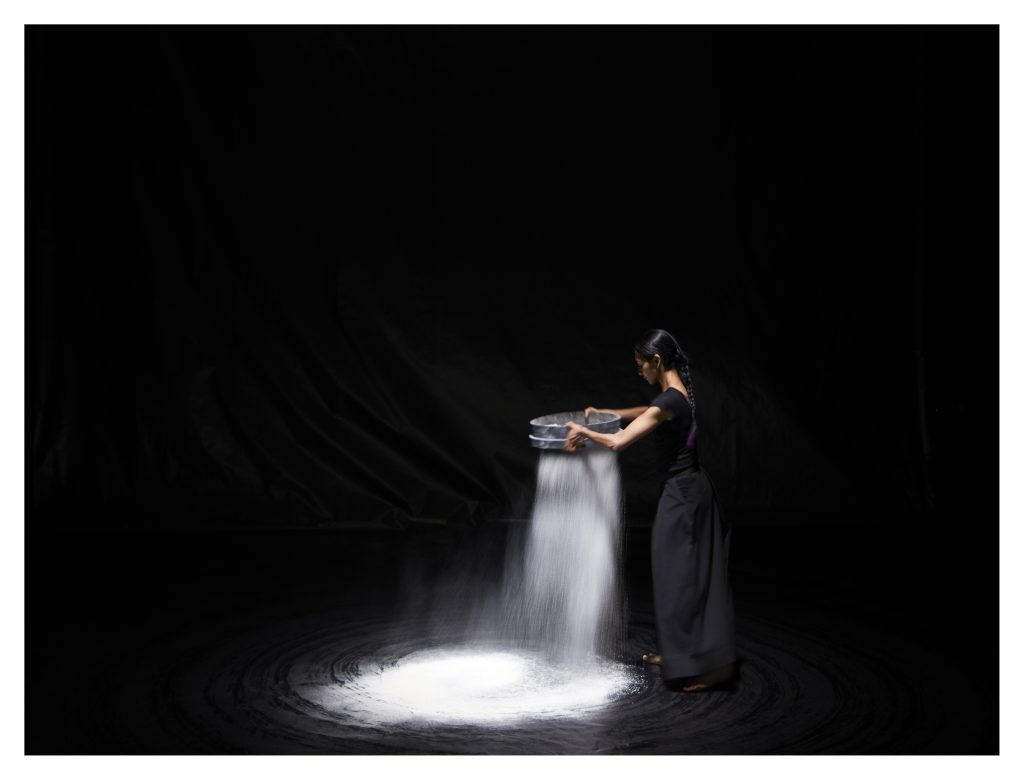
Meanwhile, in the Barbican’s smaller space, The Pit, there will be two shows presented, one from the UK and one international work.
Thick & Tight return to London International Mime Festival at the Barbican with Short & Sweet, an amuse-bouche platter of nine new works designed to excite, provoke and satisfy. Created by company co-founders/co-directors Eleanor Perry and Daniel Hay-Gordon, this ‘thoroughly modern variety show’ mixes dance, drag, lip-syncing and satire, bringing a host of famous and infamous characters to life, from Sid Vicious to Twiggy, Grace Jones, Rasputin, and everyone’s favourite avant-garde duo, John Cage & Elaine Paige. Oh, and there are eight Edith Sitwells in the mix, too!
Also at The Pit: French company Stereoptik (Romain Bermond and Jean-Baptiste Maillet) are back with their latest handmade spectacle, Stellaire – a love story unfolding through space and time, set in a magic-lantern world. Using paper, chalk, charcoal, sand, silhouettes and projection, these virtuoso visual artists create wondrous cartoon-theatre that emerges before the audience’s eyes.
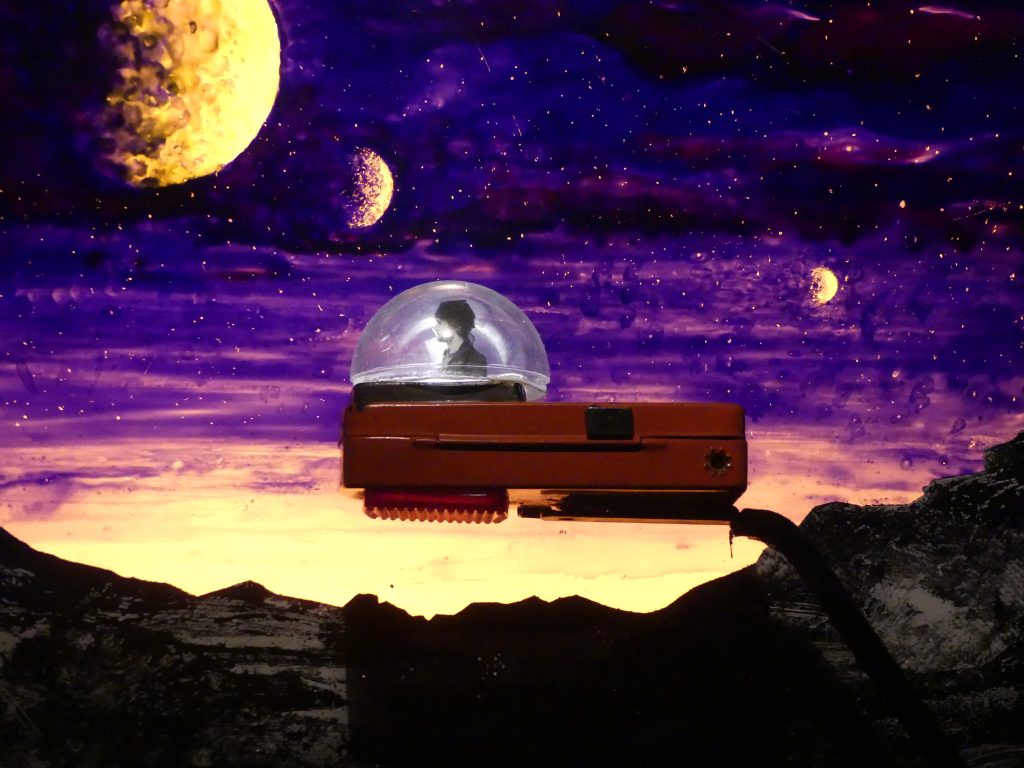
Another crucial element of this year’s Festival continues from 2021: the commissioning of a series of five short films. Last year’s commissions were for UK artists – including Andrew Dawson, whose film, Joseph points out, has gone on to be shown at short film festivals worldwide. This year, the emphasis is on overseas artists. As Joe says, ‘this time we thought, given the problems of bringing in work from overseas, we’d preserve the ‘international’ element of the Festival through film commissions. We went to people whose work we know and like and asked them to create a short film between 3-10 minutes long that isn’t driven by spoken text’.
‘The artists have a completely free hand to do what they like,’ says Helen, ‘and as things stand, we are as much in the dark as you are!’
The commissioned artists include Dewey Dell (Italy), an offshoot of the legendary Castelluci company, whose work features choreography, music and drama inspired and nourished by images from art history and the animal kingdom; and Hiroaki Umeda (Japan), a Tokyo-based choreographer, photographer and video artist creating mesmerising visual environments for his visceral live performances. As someone who uses video in his work, commissioning him to make a short film seems like a good move!
Then, there’s Delgado Fuchs (Switzerland), who Helen and Joseph first encountered at the Avignon Festival where they presented what Helen describes as a ‘happening in an art gallery’. Their body-based work involves dance, performance, installation, photography, video, fashion and fine arts, and fits no conventional categories.
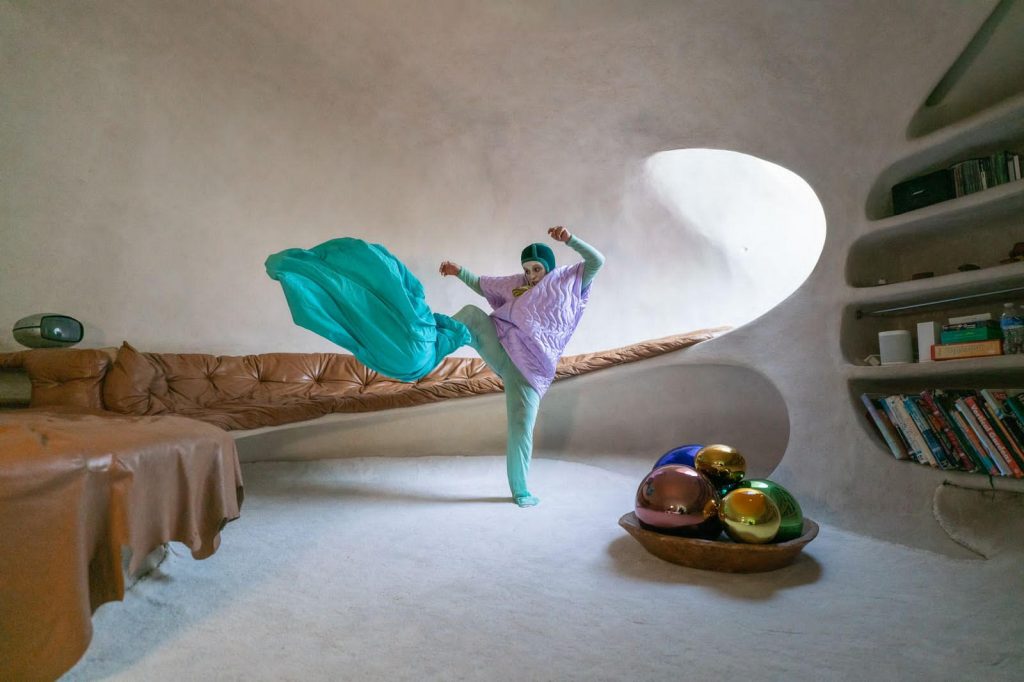
Gabriela Muñoz from Mexico is a clown best known for her portrayal of a woman desperate for companionship and marriage in Perhaps, Perhaps, Quizas, seen at LIMF 2018. Her Instagram feed is full of the most wonderful visual images – photographs that have been recently gathered into a book – so it will be very interesting to see her switch from still to moving image.
Finally, Patrick Sims (France/USA) is the founder and former creative director of Buchinger’s Boot Marionettes, then creating his current company Les Antliaclastes, who have been seen at LIMF numerous times; making anarchic and eclectic work which uses a unique blend of different puppetry techniques and styles, together with masks, automata and other machines, and original organic soundtracks. He has a fine eye for detail, so this will be one to look out for. ’Expect something like a cross between the Brothers Quay and Jan Svankmajer,’ says Helen, ‘although, of course, he may surprise us with something completely different!’
‘We need also to mention Abel & Gordon, our film collaboration with the Barbican,’ says Joseph. Long-time friends of the festival, Belgium-based comedy duo Fiona Gordon and Dominique Abel present three of their early shorts. In Rosita (1997) the pair are a fortune teller and her assistant, working out of a dilapidated caravan; in Merci Cupidon (1994) attraction sparks between their two oddball singletons in a strange, out-of-the-way nightspot; and in Walking on the Wild Side (2004), an awkward misunderstanding occurs between a man and a cleaning-lady. Phenomenal physical performers, the duo is steeped in the grand French physical-comedy tradition of Jacques Tati and Pierre Étaix, who are also represented in the programme.
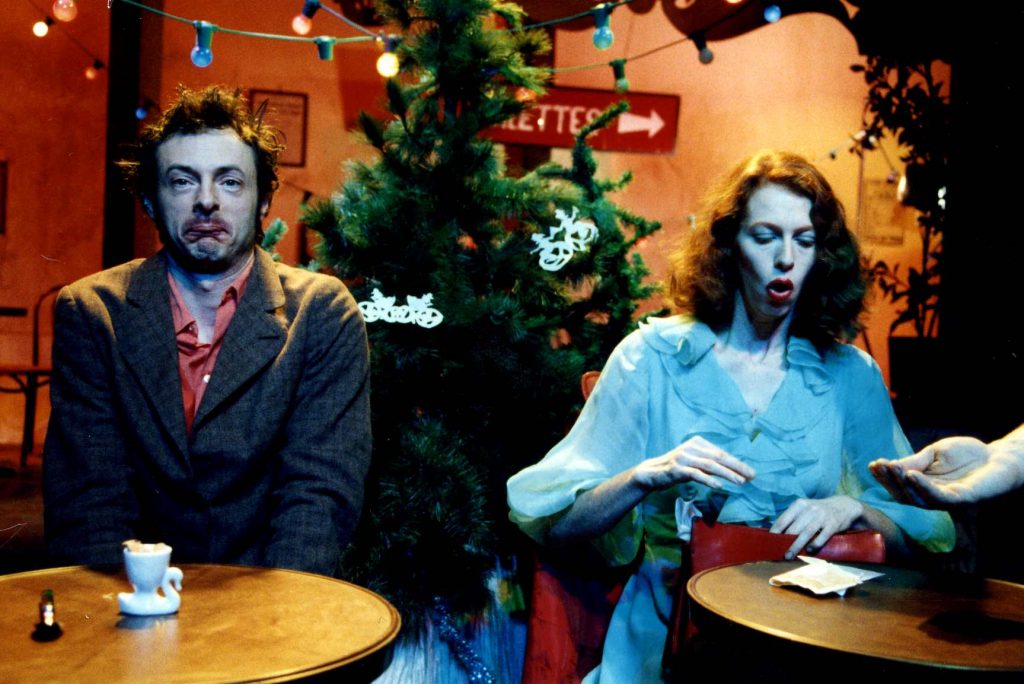
There is also a further film element to the Festival with the showing of a programme of shorts by legendary puppeteer Heather Henson, and the presentation of a filmed piece called COLD, which Joseph says is ‘a gripping piece of work – really good film-making.’
Described as ‘a dark fairy tale about love, grief, madness and redemption’, COLD was created by acclaimed Lecoq-trained physical theatre-maker Claire Coaché, and her husband, the award-winning playwright and film-maker Lisle Turner. It is based on their own experiences of baby loss and first-person testimony from other grieving parents – giving a lie to the cliché that physical and visual theatre can’t deal with serious subjects, which Joe says is ‘a hoary old fallacy that we still live with, 40 years on’.
Both of the above will be screened online on mimelondon.com from 12 January.
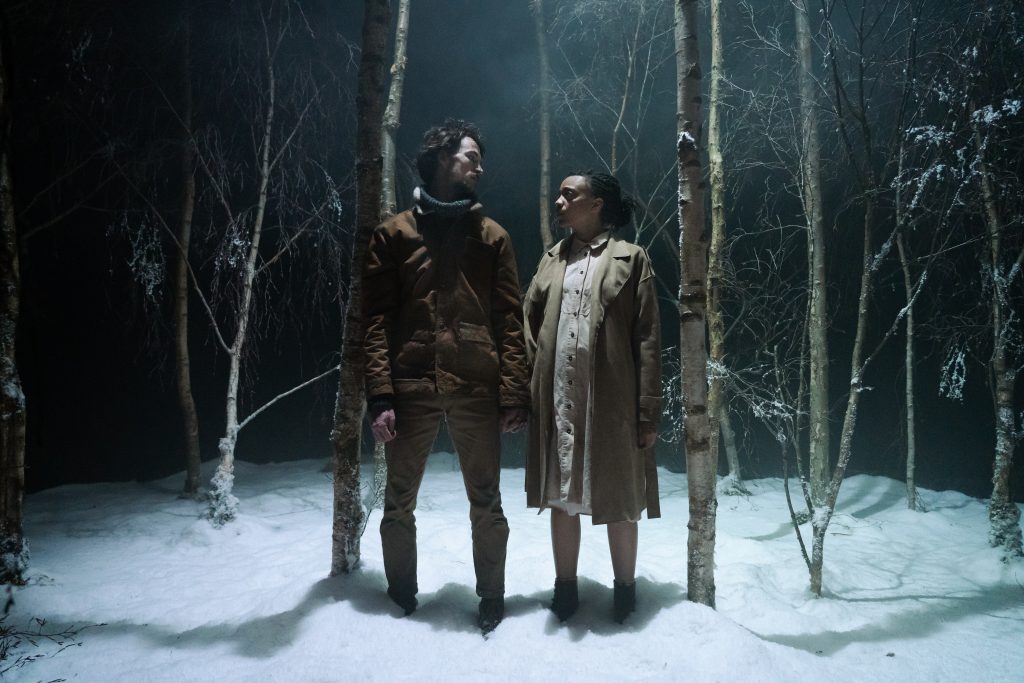
Workshops have always been an important part of the Mime Festival’s programme, and this year is no exception. Last year, the workshop programme went wholly online – allowing for a worldwide engagement. This year, the online element is maintained, including the instantly sold-out offering by legendary American clown Avner the Eccentric, and from closer to home, a mask workshop by Vamos Theatre.
In person, there will be numerous offerings, including the always-popular Angela de Castro. Then, there is The Brides project by David Glass, which Helen describes as ‘ a development workshop. Participants don’t pay, but apply to be part of the group,’ adding that ‘David is all over the place building bridges, making connections. I admire his tenacity!’
So there we are – the London International Mime Festival 2022, ready to launch!
‘More by judgement than luck we’ve put together a festival that has a balance of new names and established artists, says Joseph. ‘a mature programme with exciting new departures. And film is now an important part of the programme…’
‘We just hope for the artists’ sake it can go ahead and audiences will turn up,’ adds Helen. ‘We have all our Covid protocols in place – and we are ready to jump, whichever way.’
As I write this article (post-Christmas) comes the good news that there will be no further lockdowns, and theatres can stay open. The London International Mime Festival post on social media that it is All Systems Go for the live shows.
Let’s leave the last word to Joseph: ‘We are very excited and confident about what we think is a great programme for what is now the country’s longest running annual international theatre festival – I’m as delighted to be doing it now as I was when it started.’
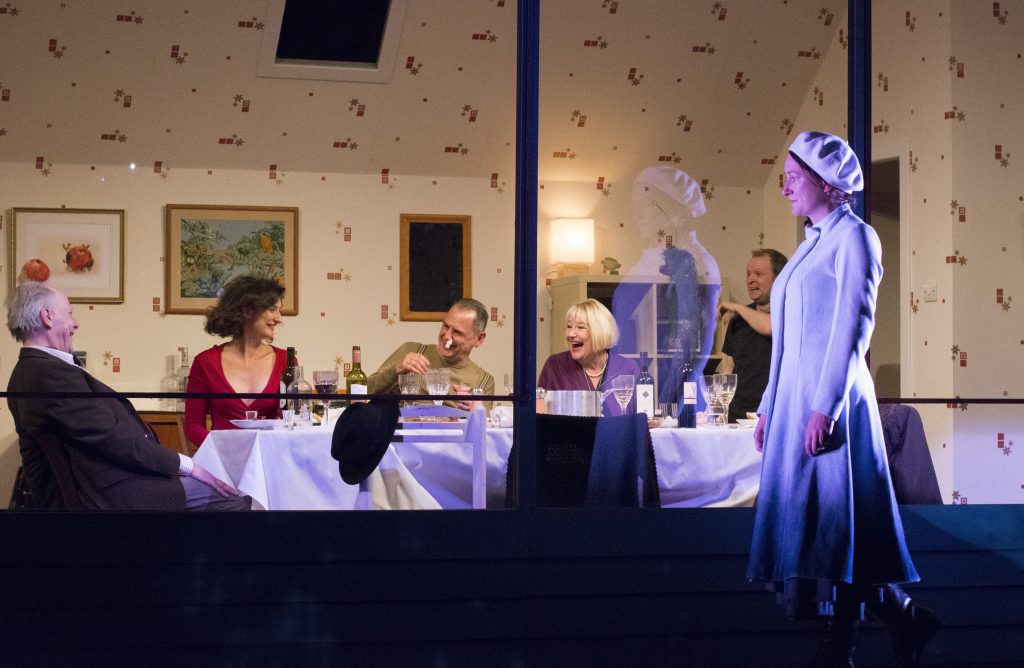
Featured image (top): Theatre Re: Bluebelle. Photo Chris Nash.
Visit mimelondon.com for further information and bookings.
The five commissioned short films are hosted on mimelondon.com and the Festival’s YouTube channel and are free-to-view from 12 January 2022.
London International Mime Festival is an Arts Council England National Portfolio Organisation.

